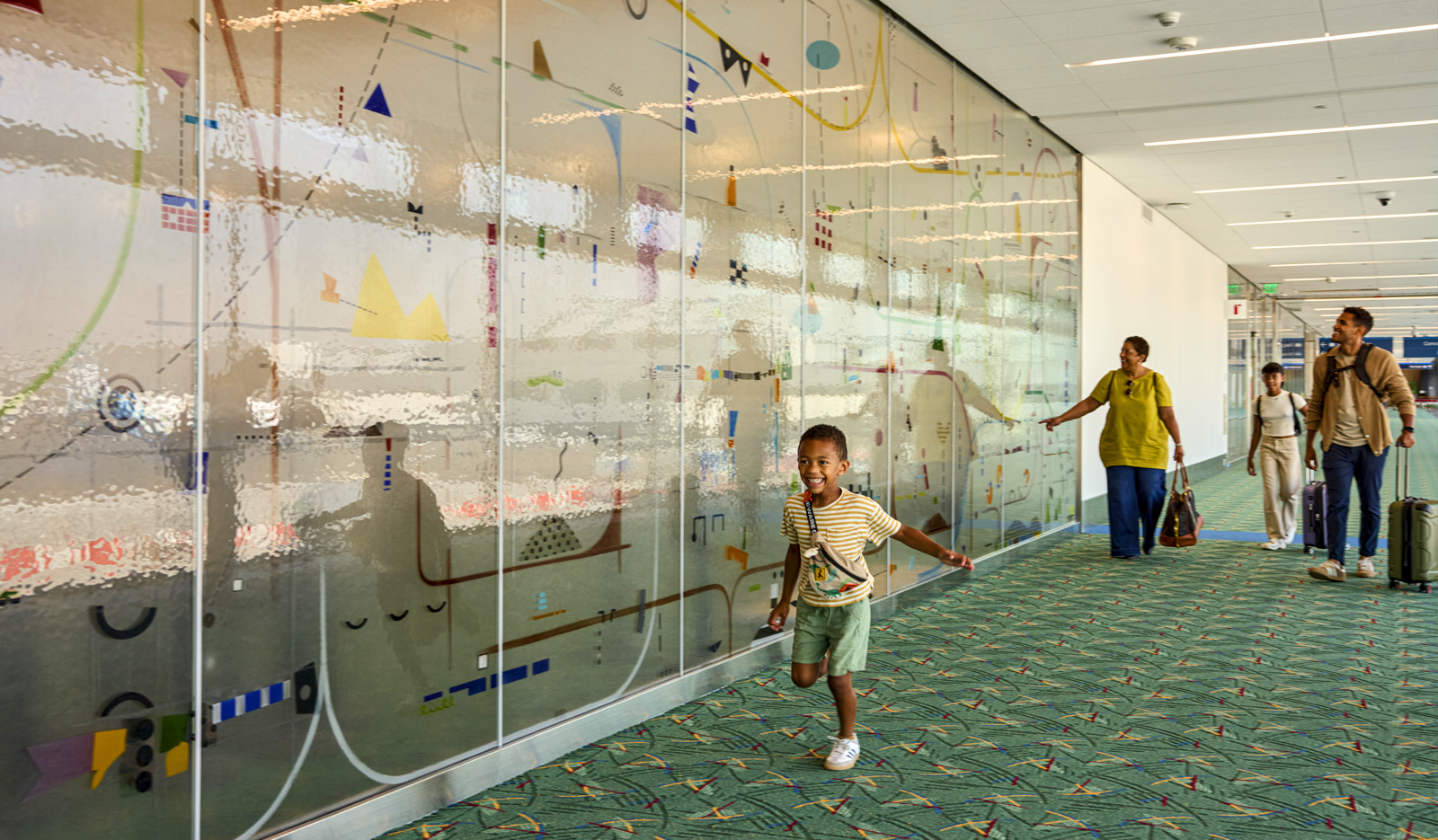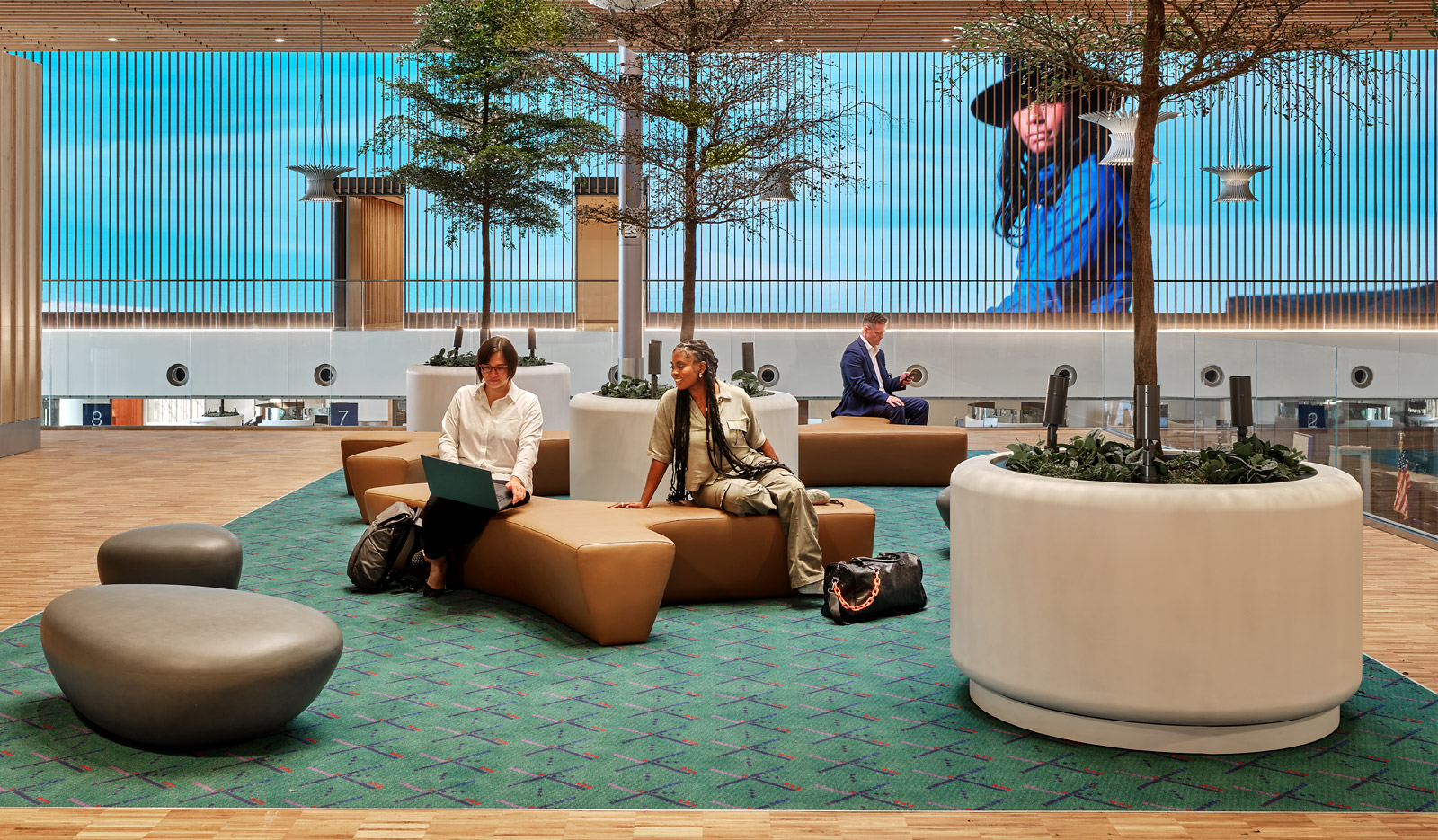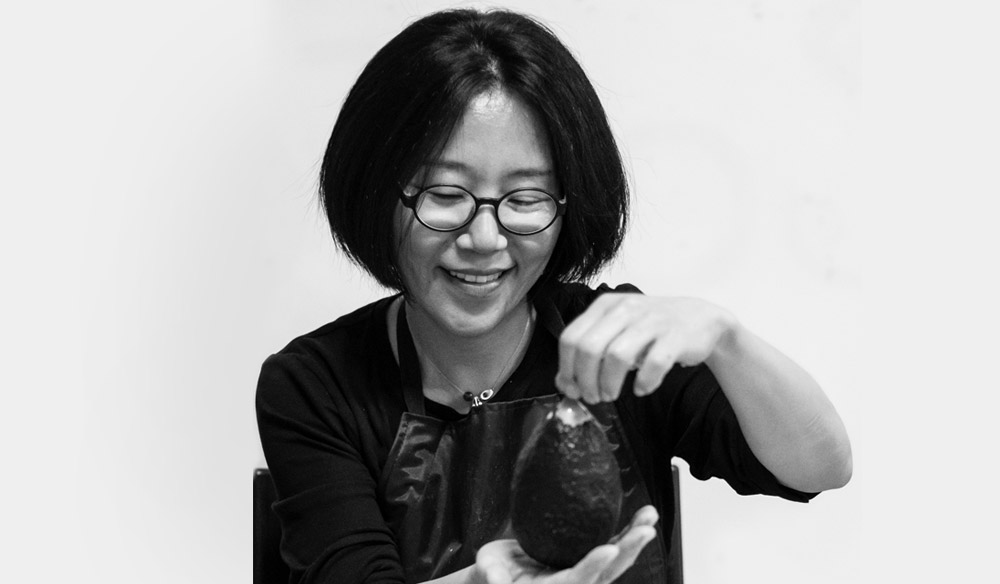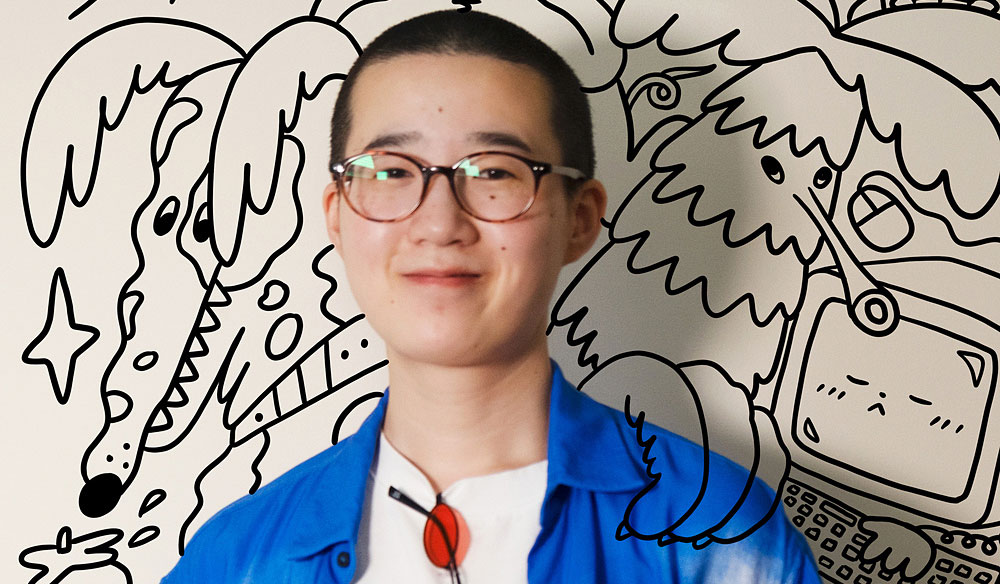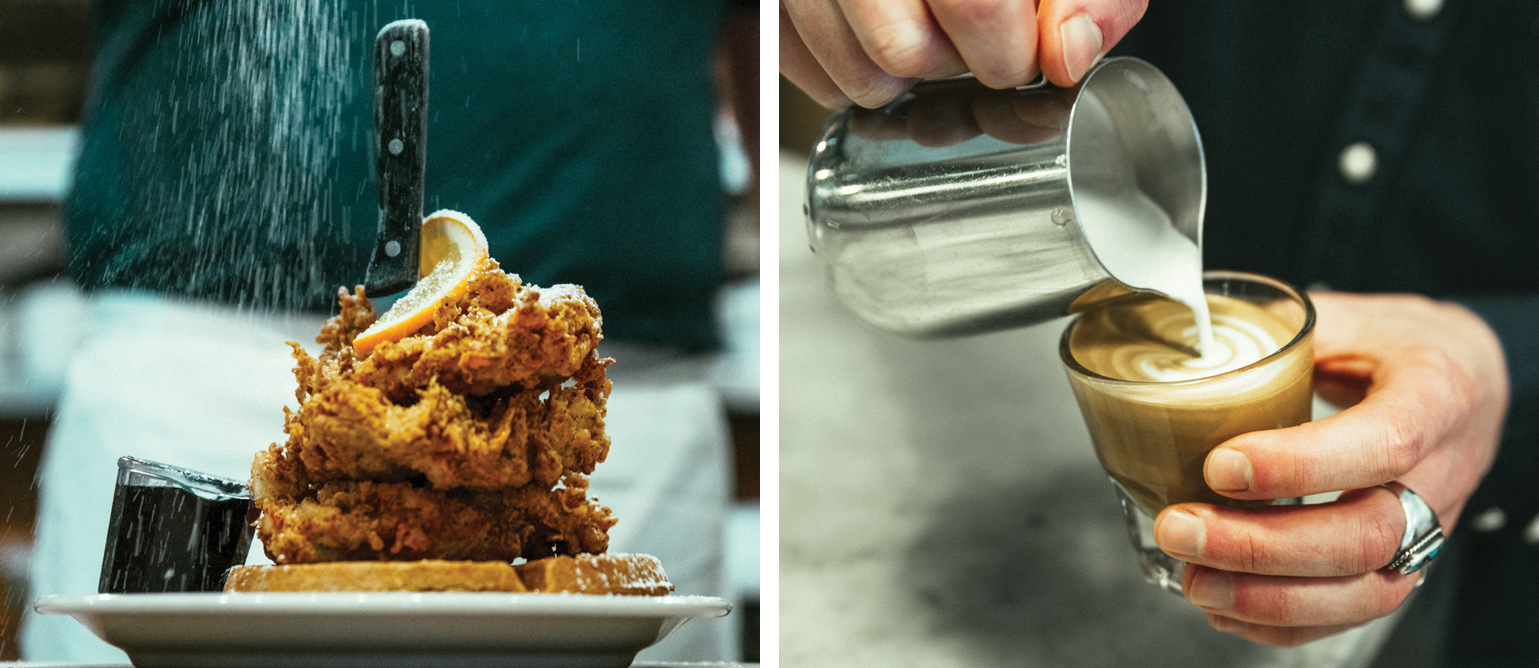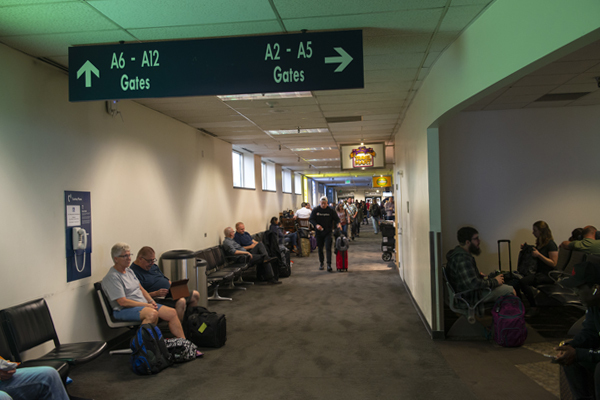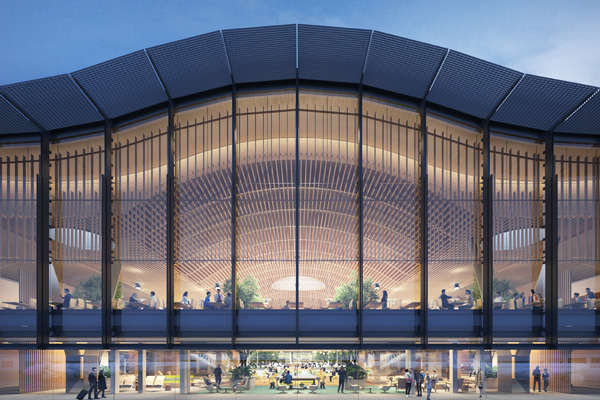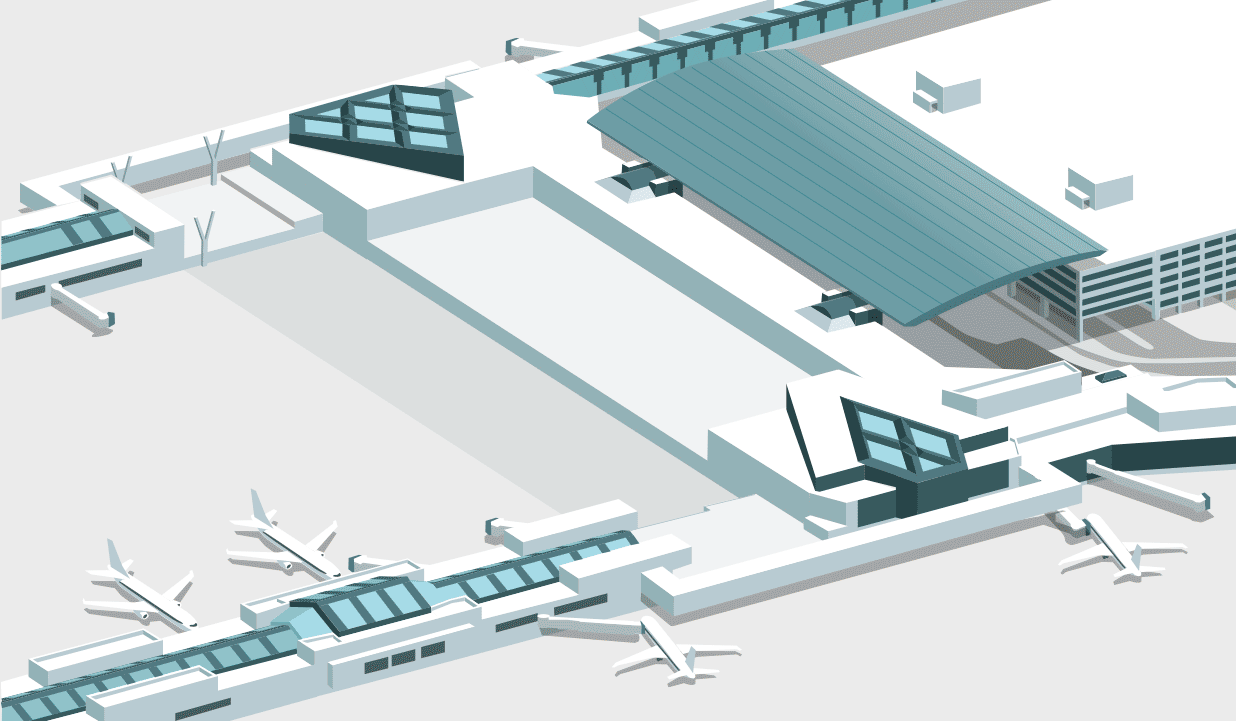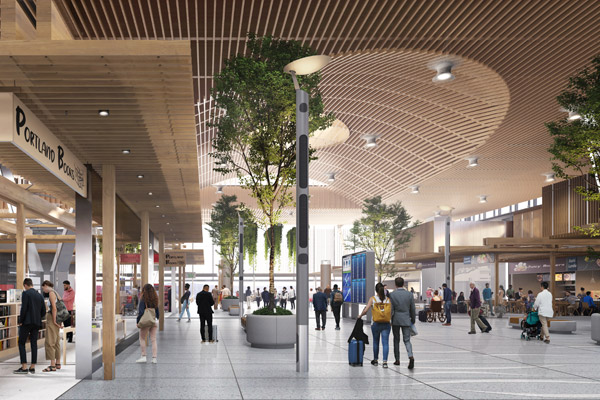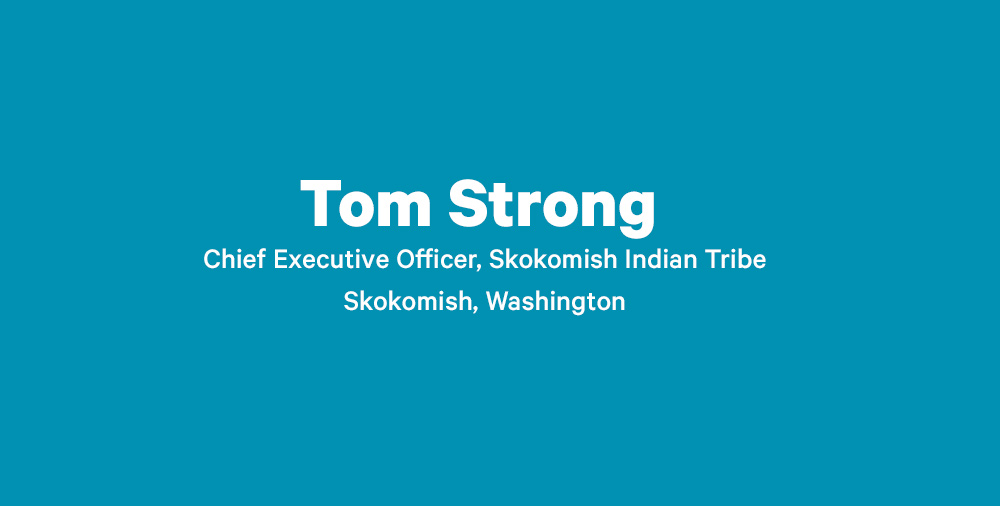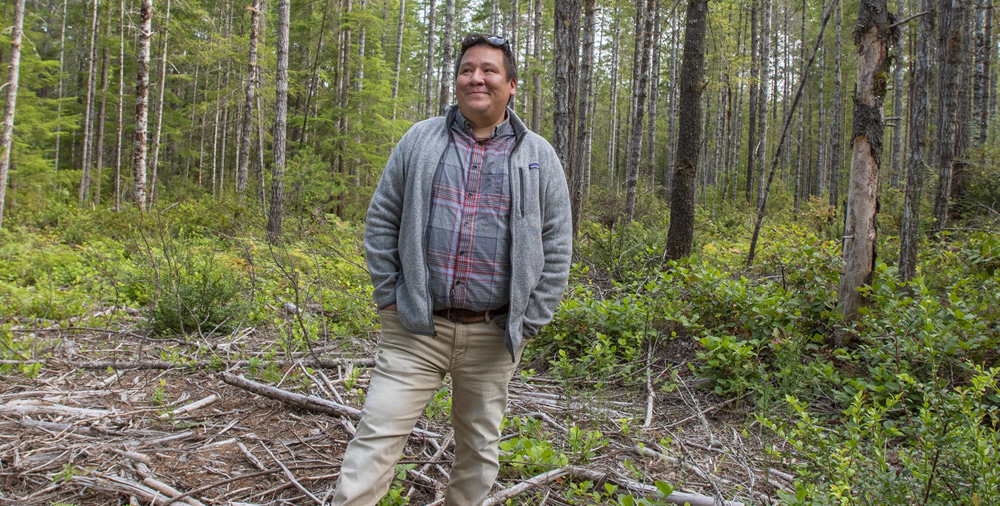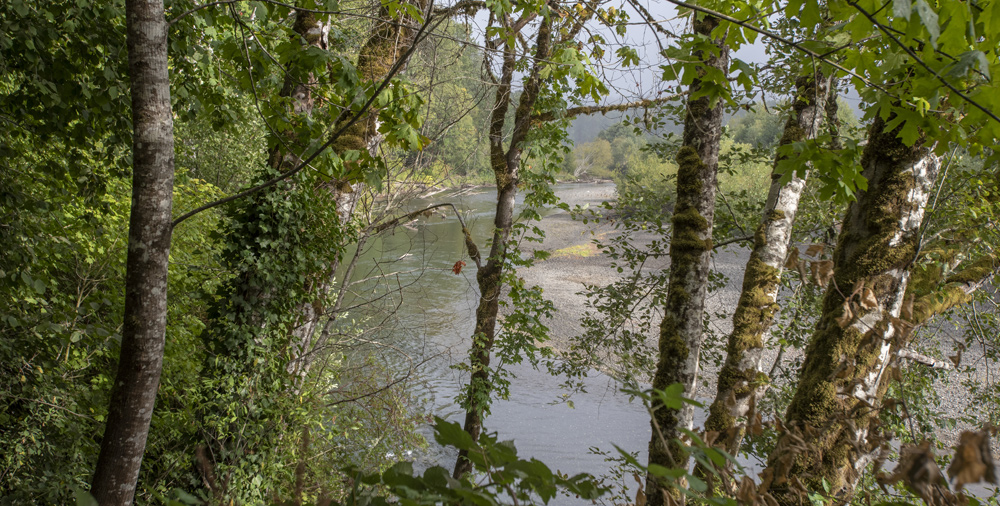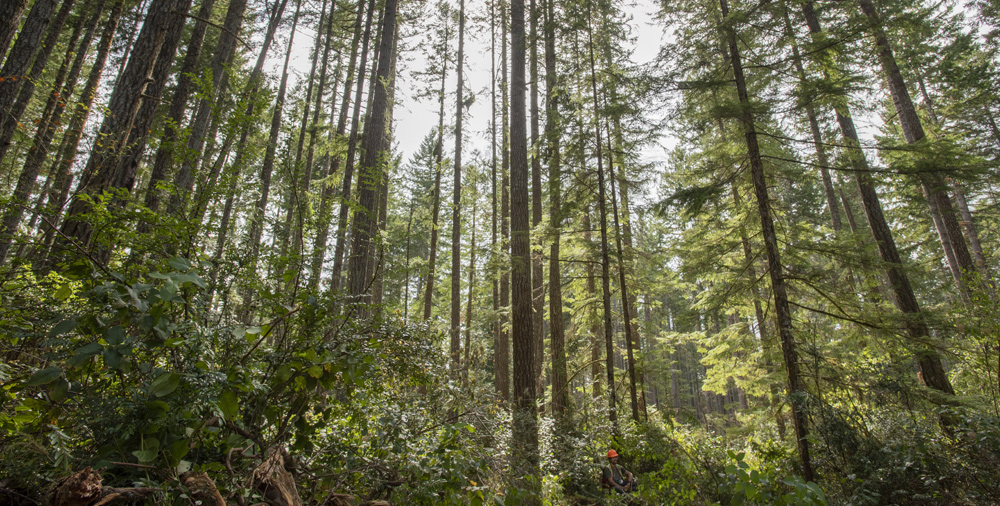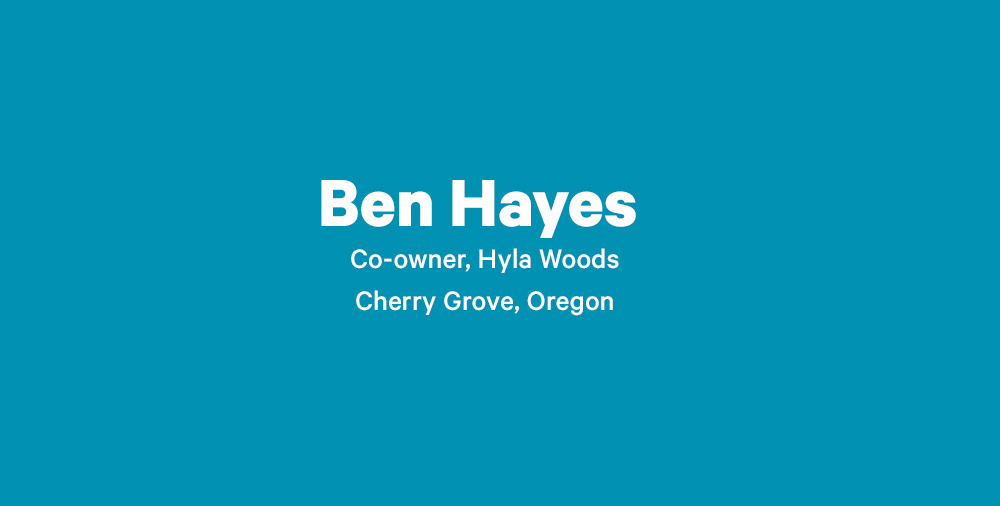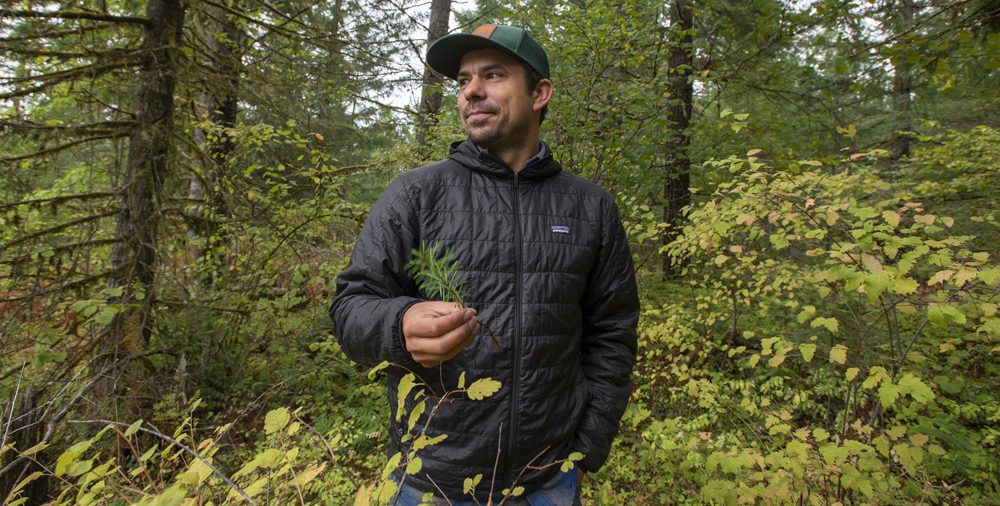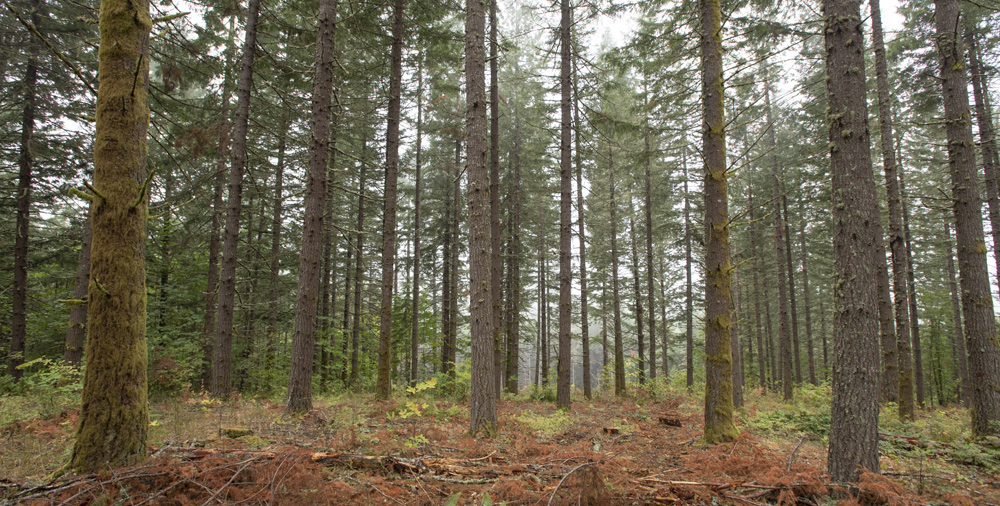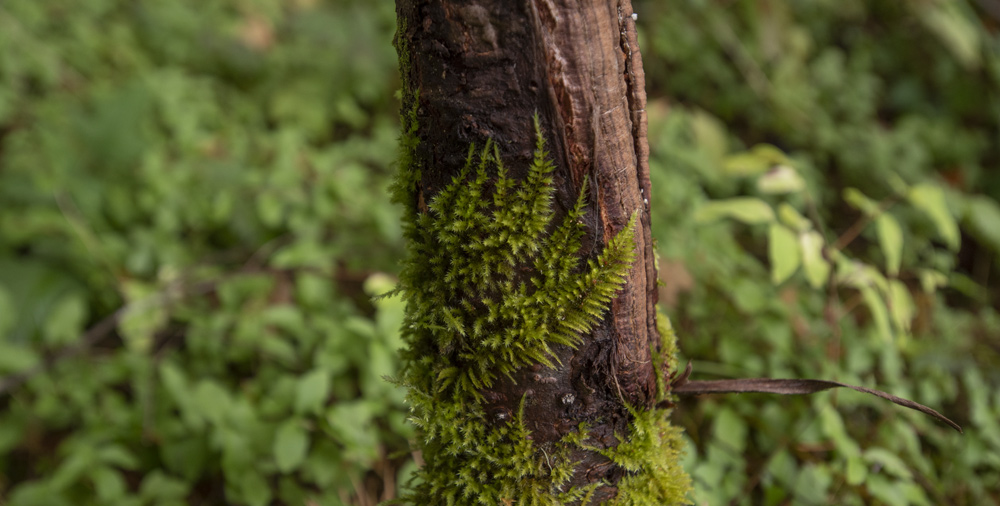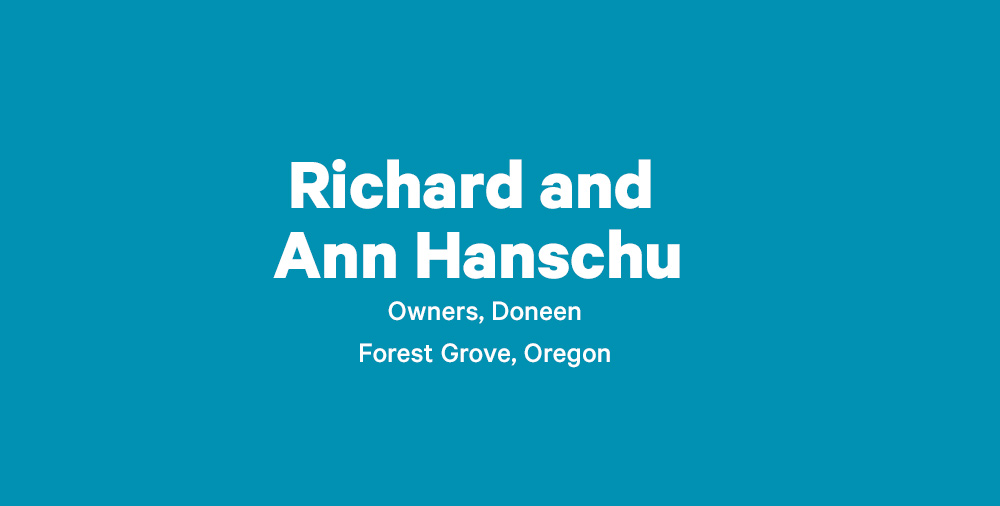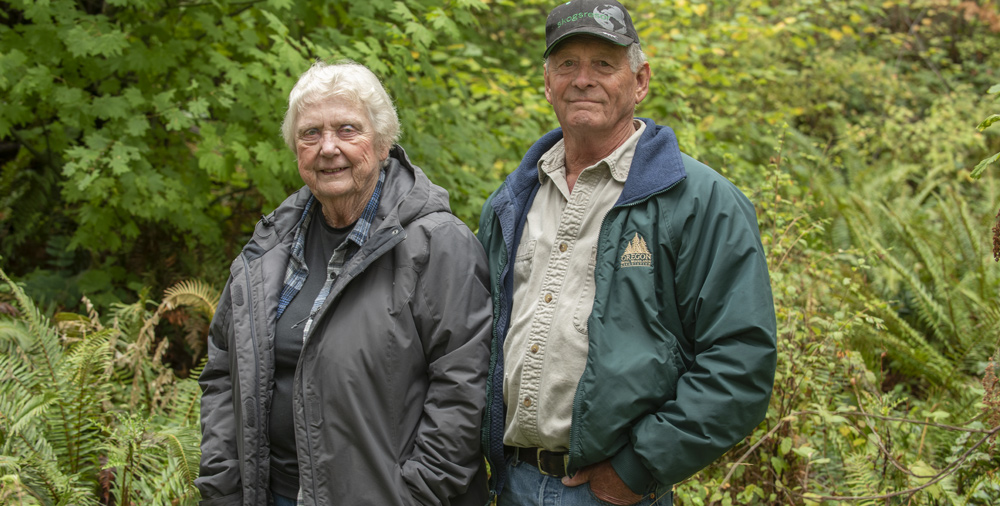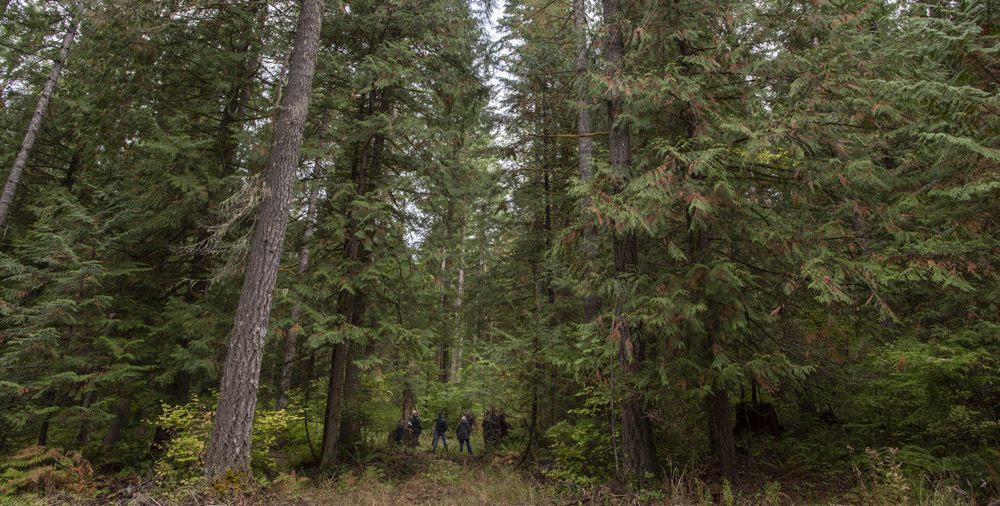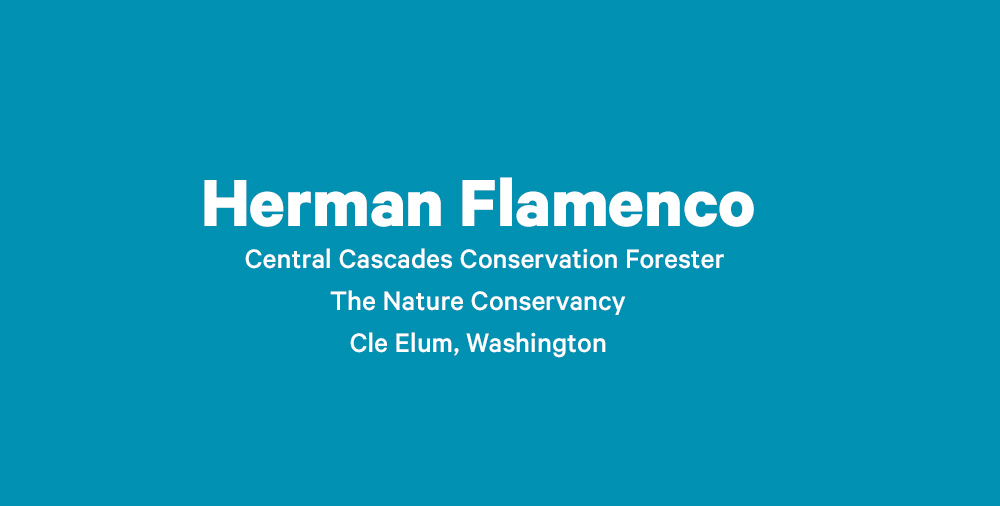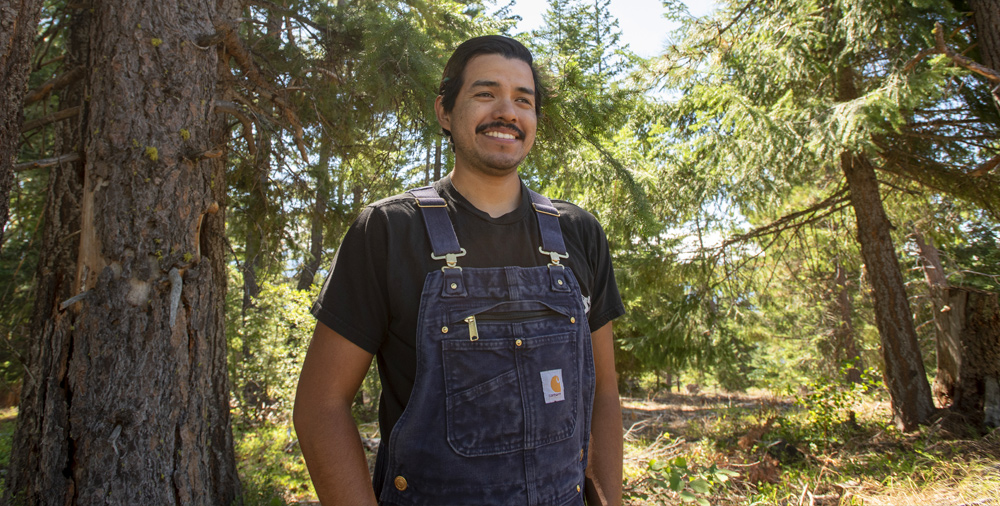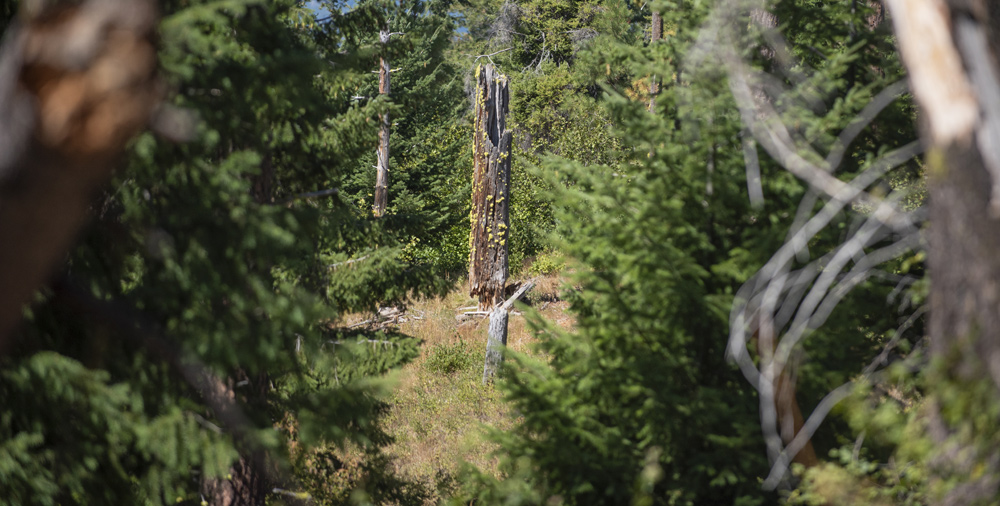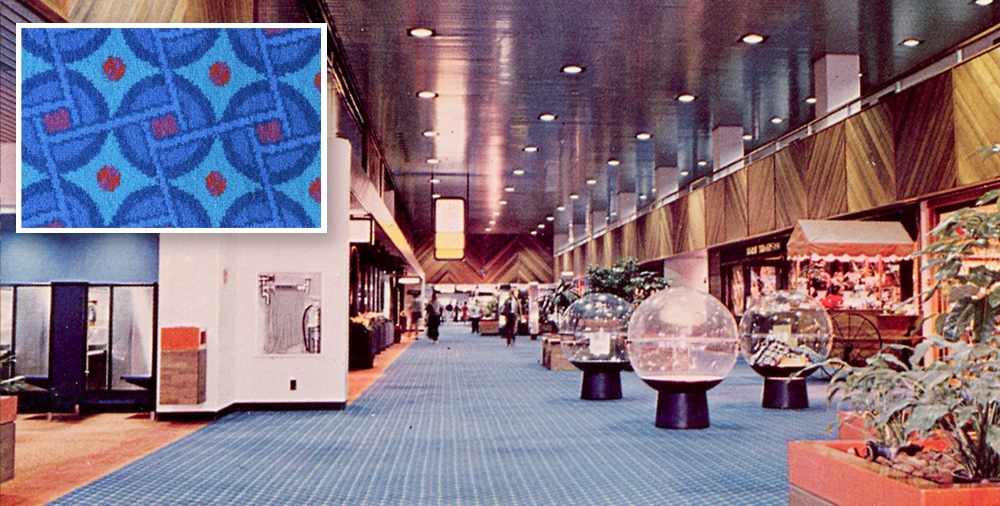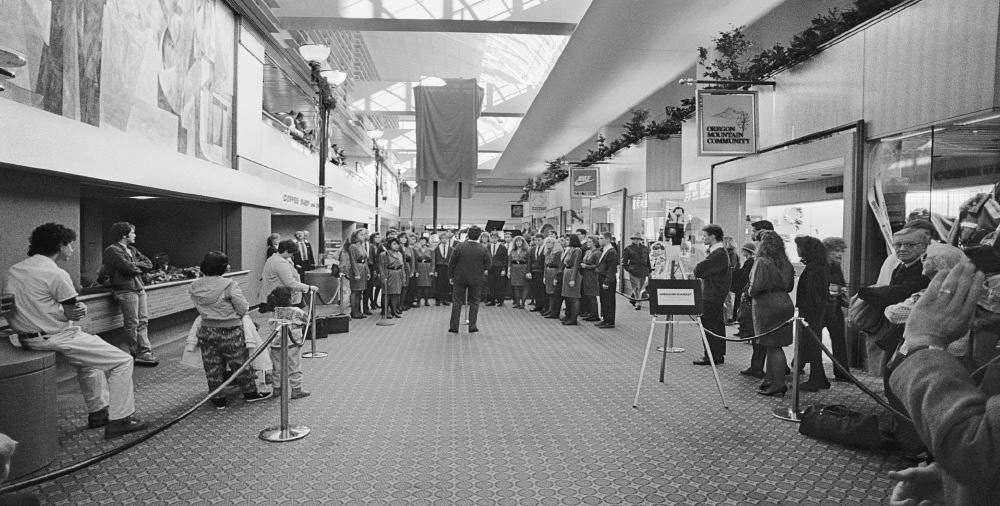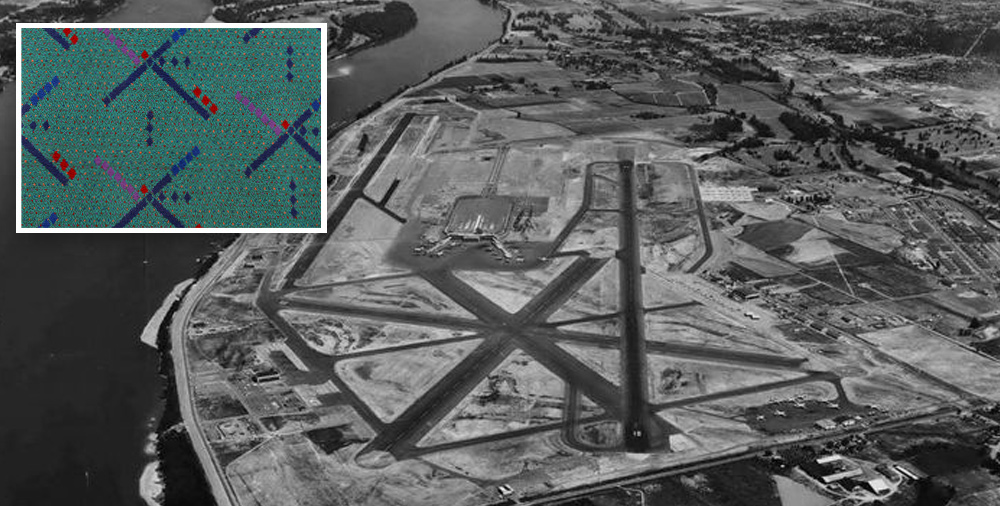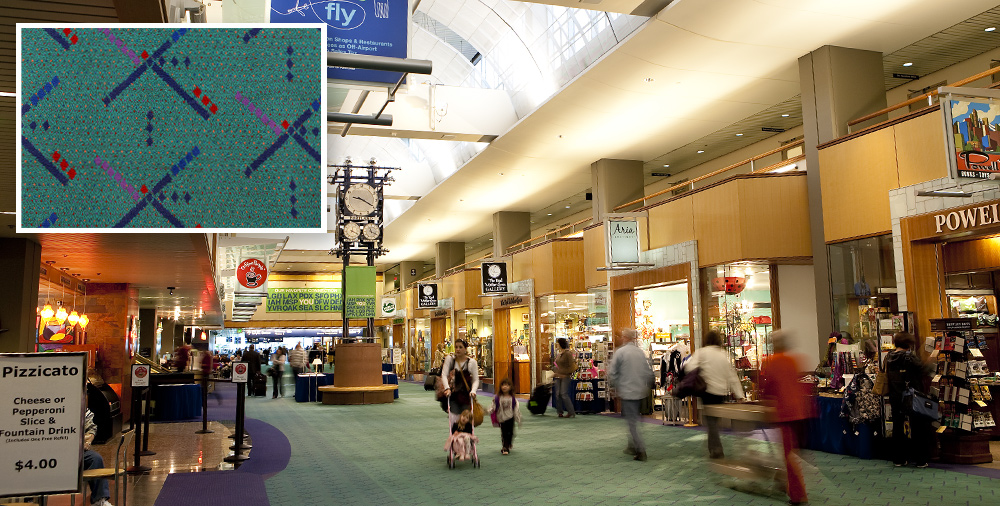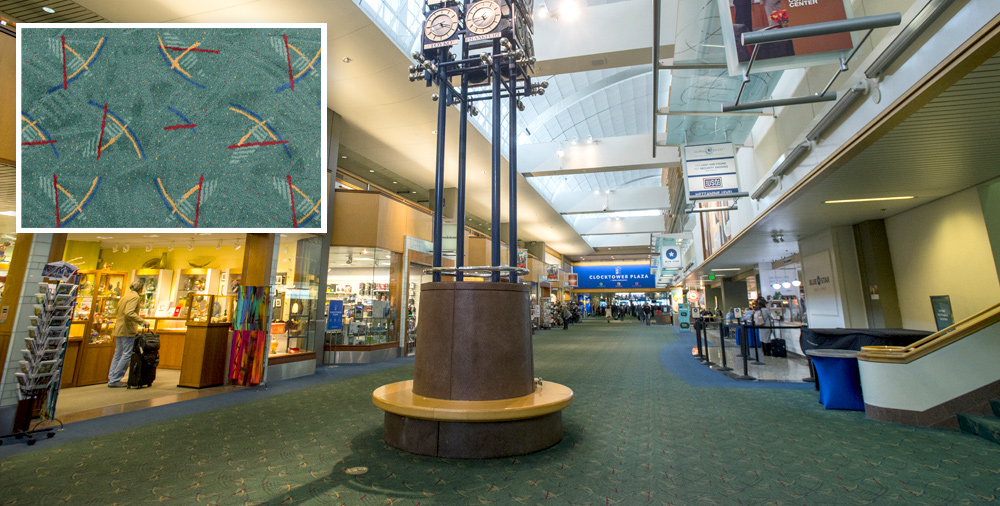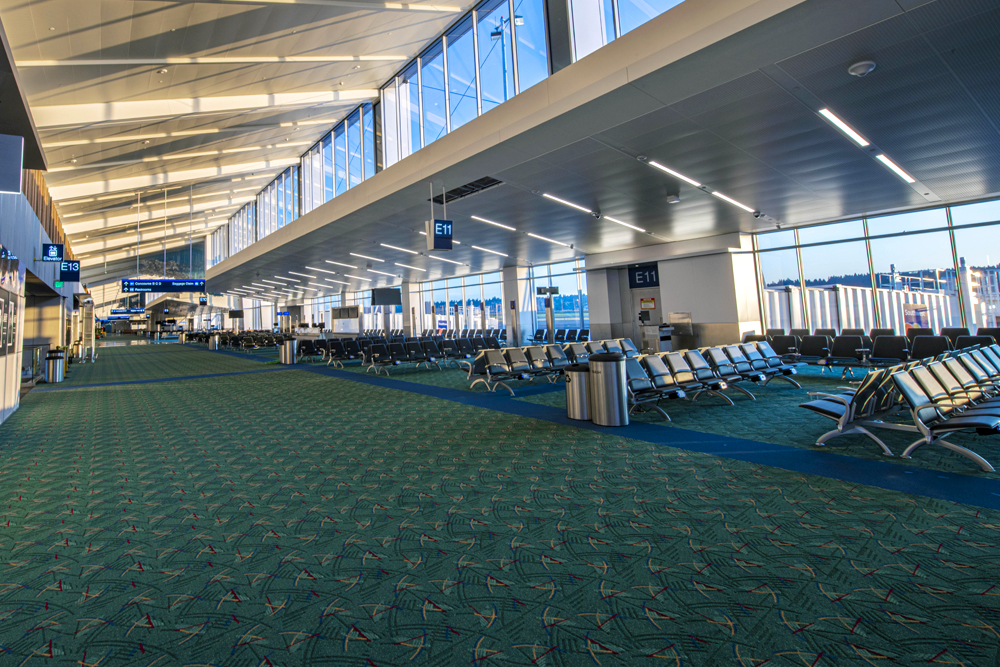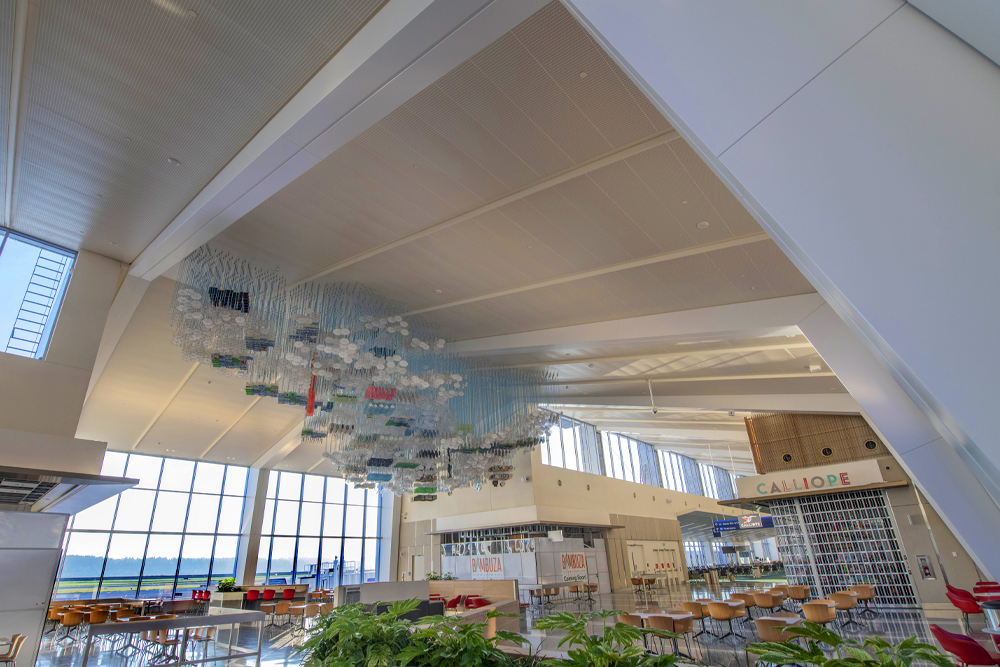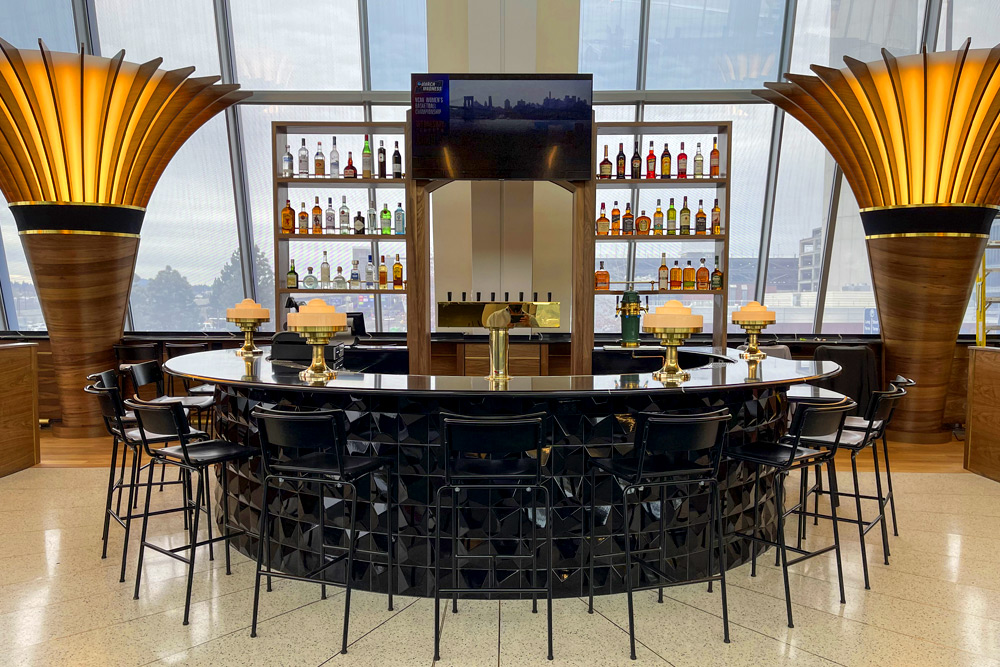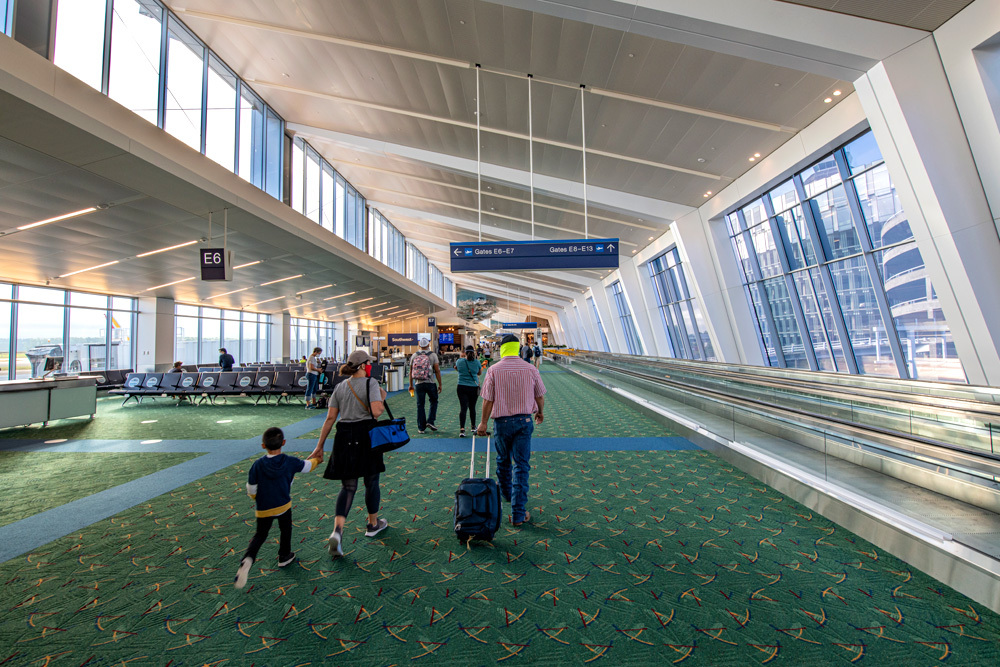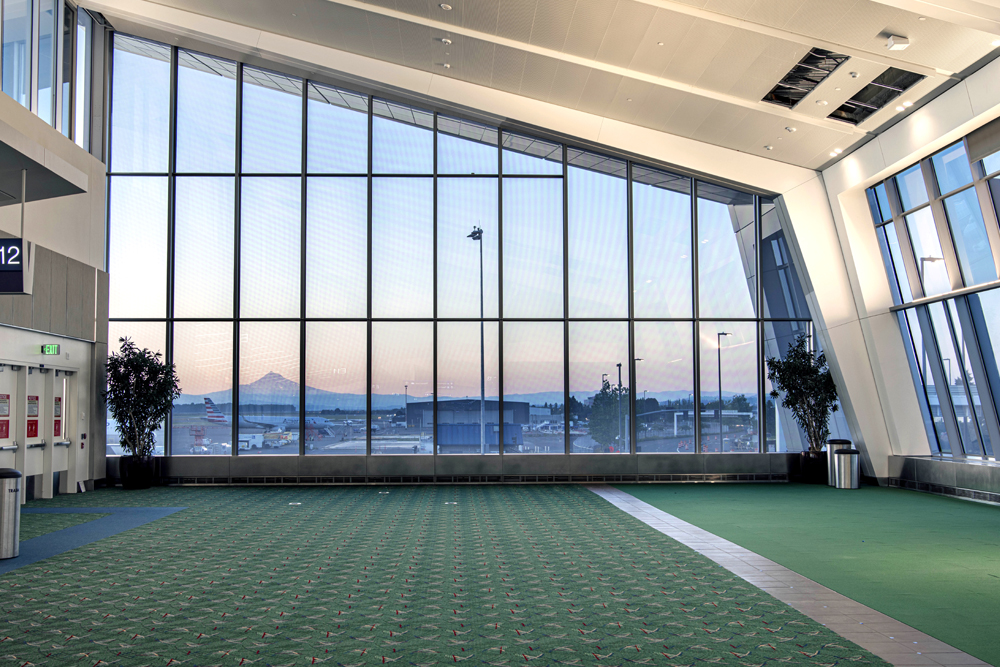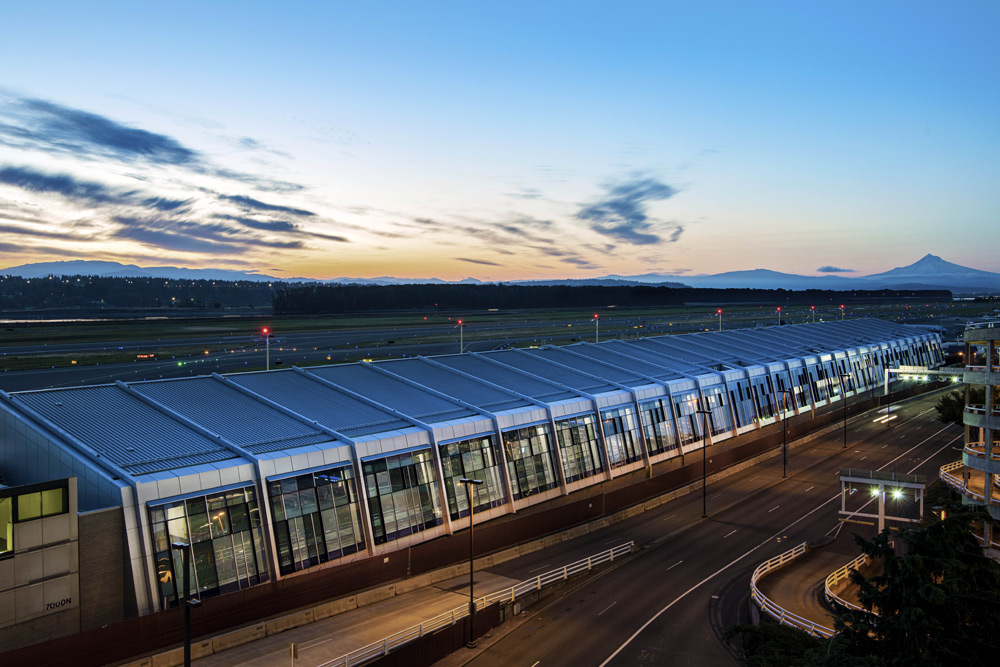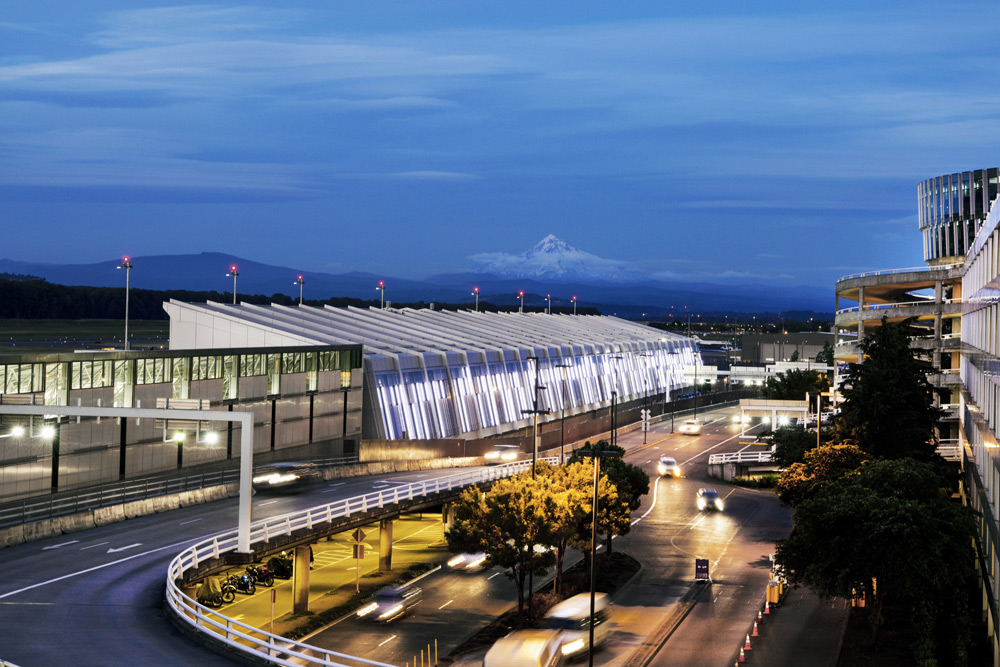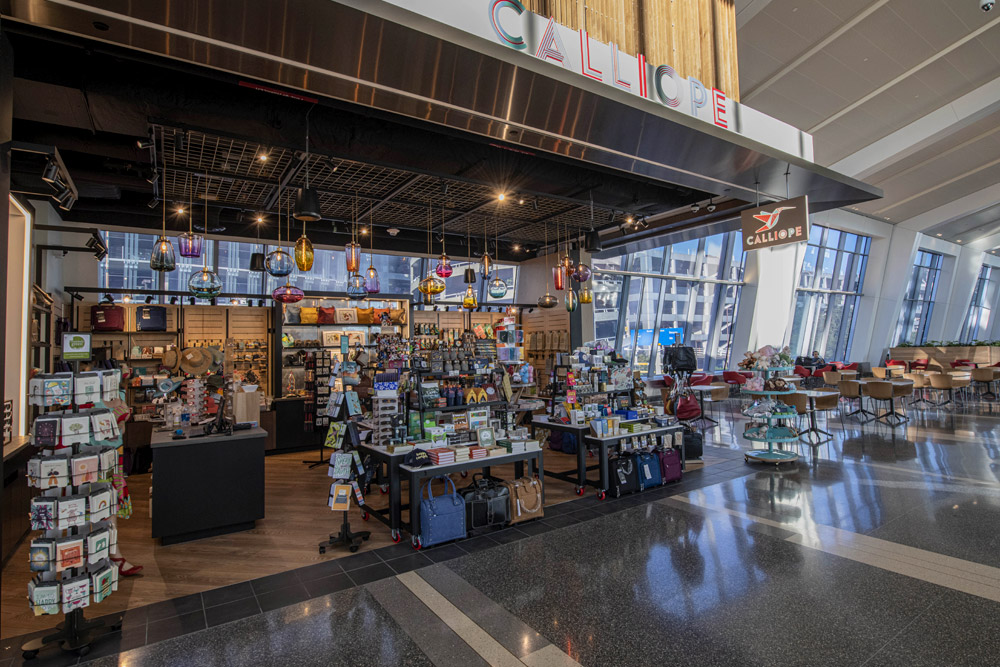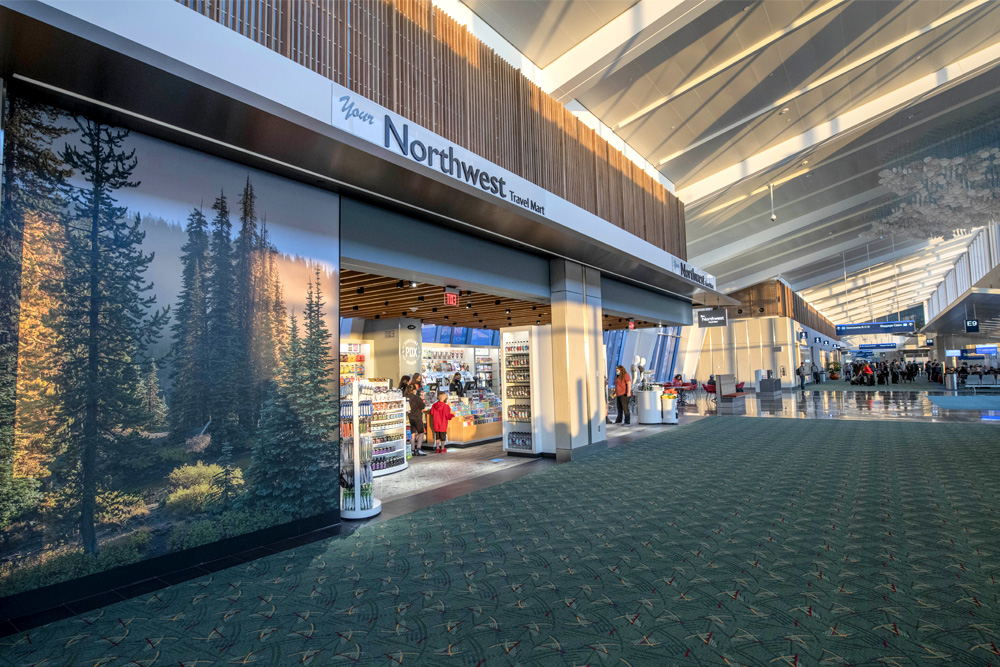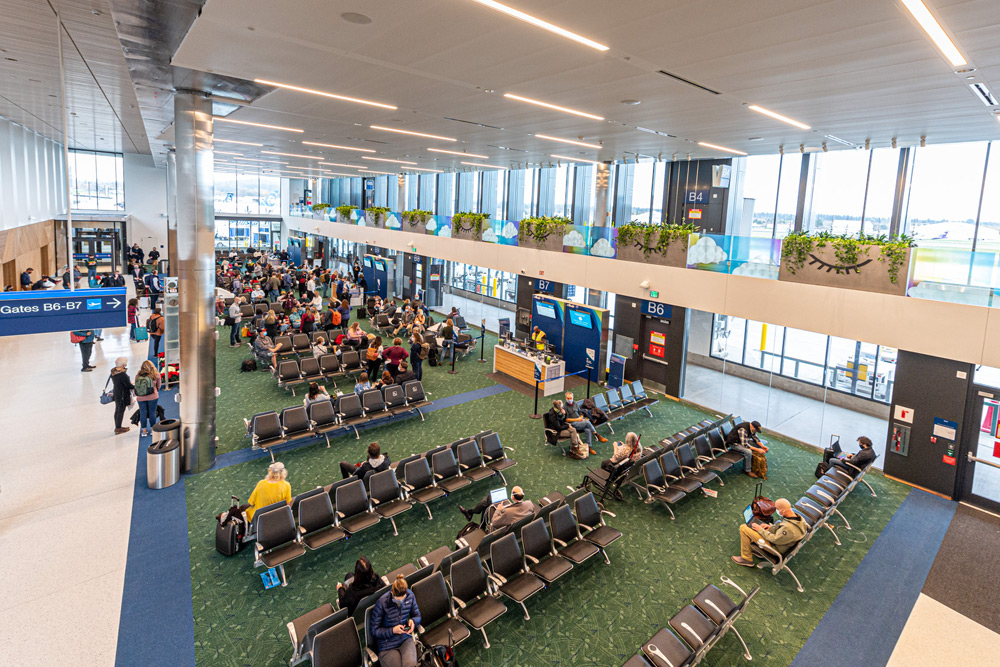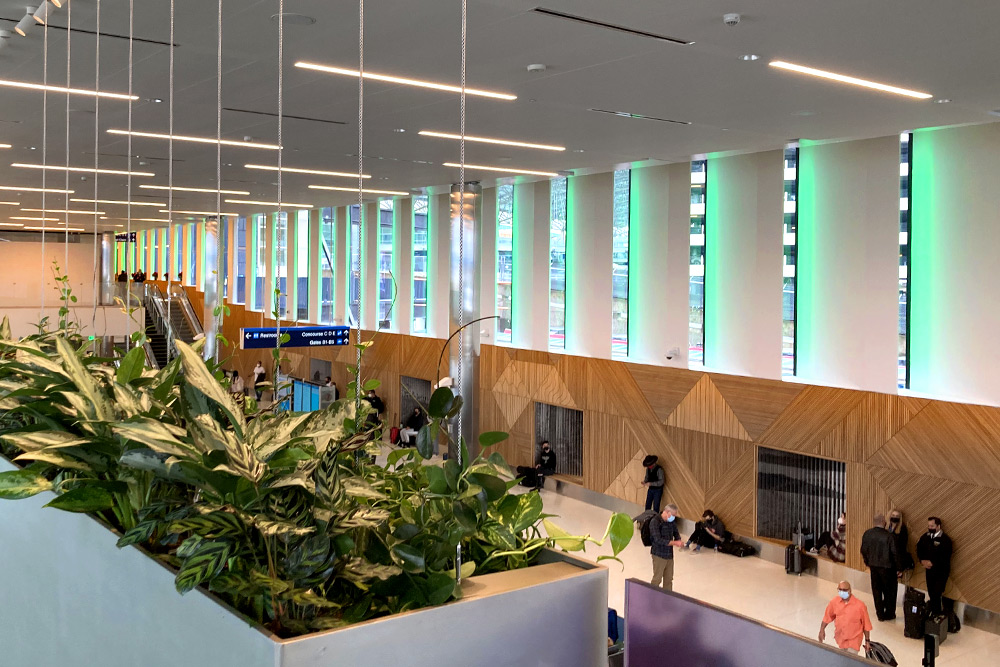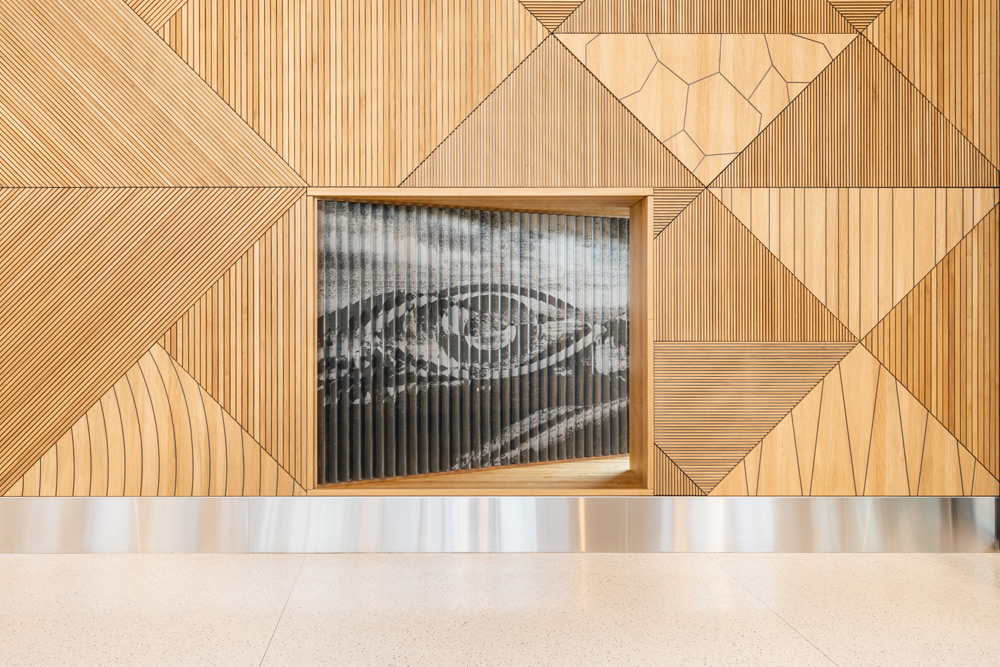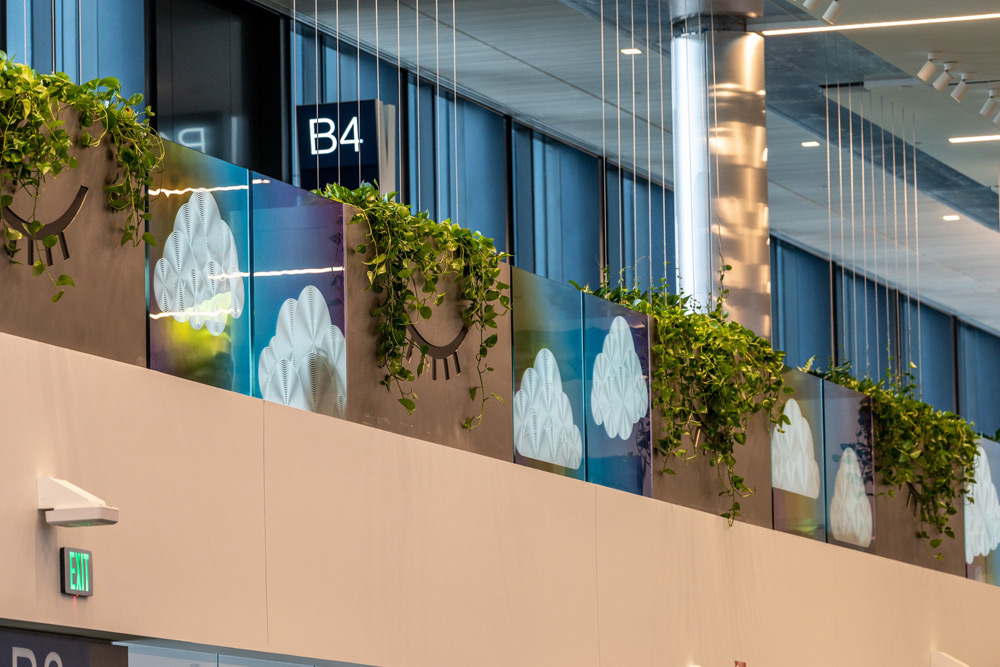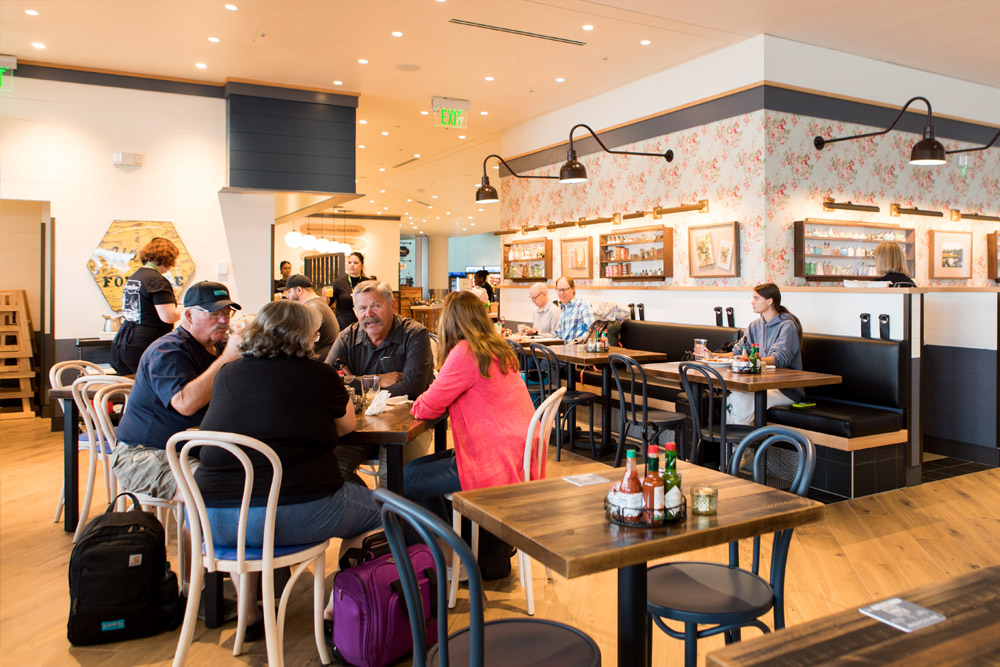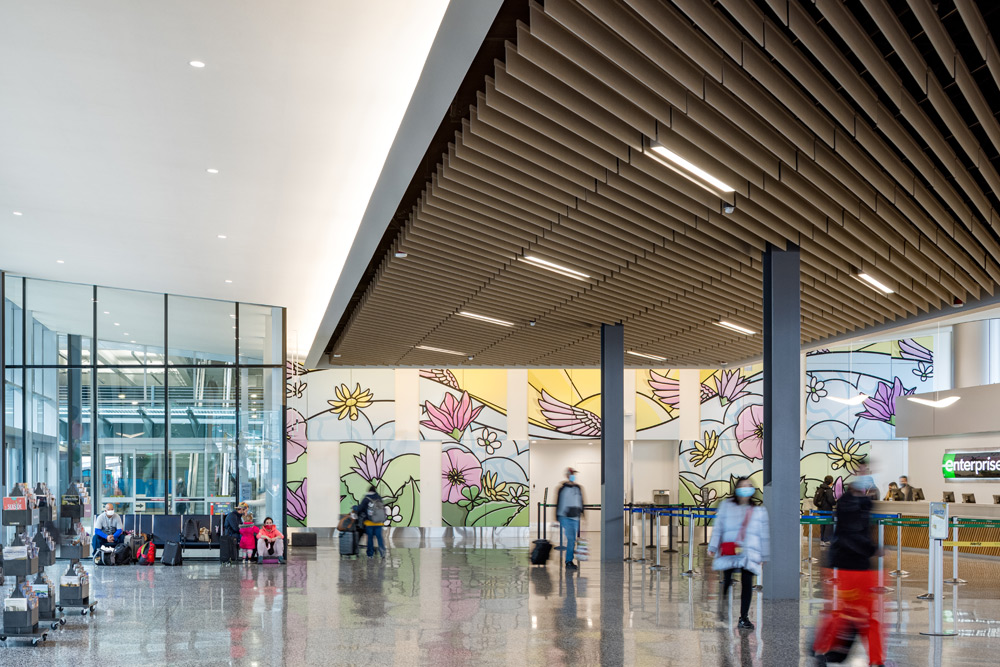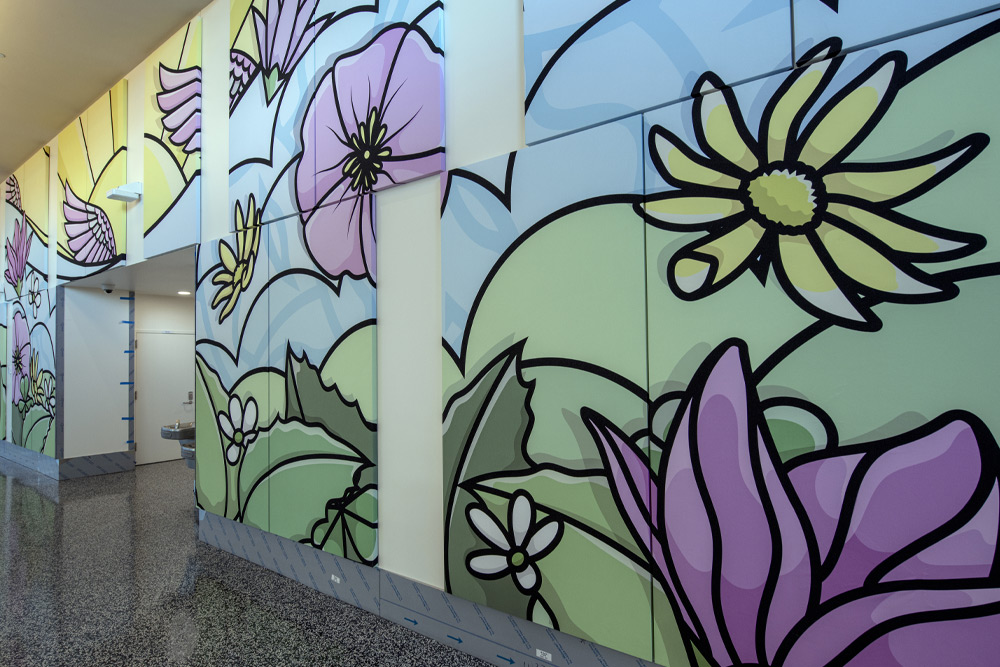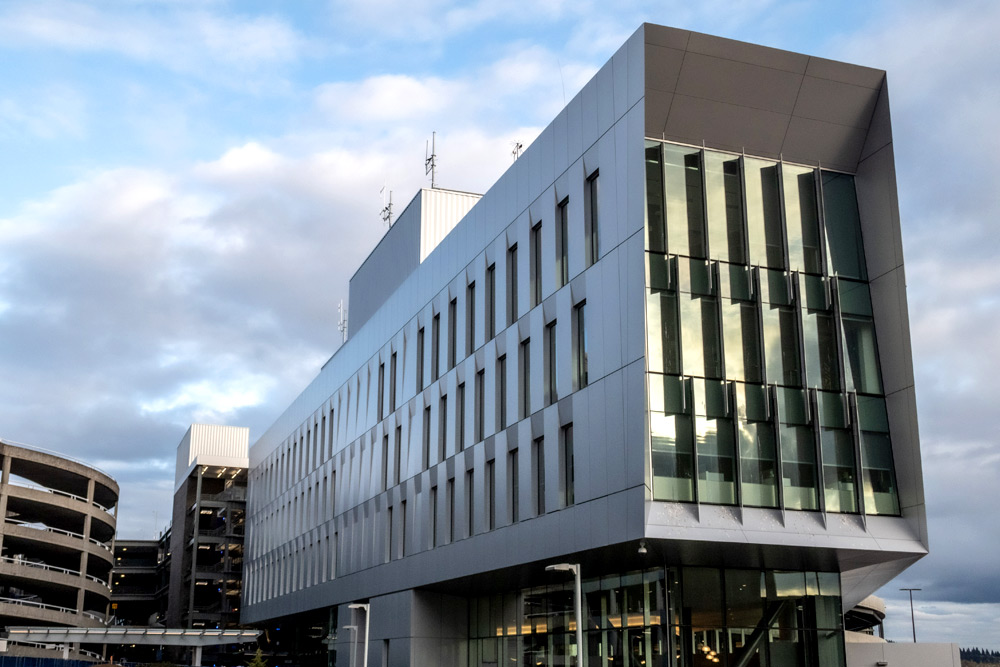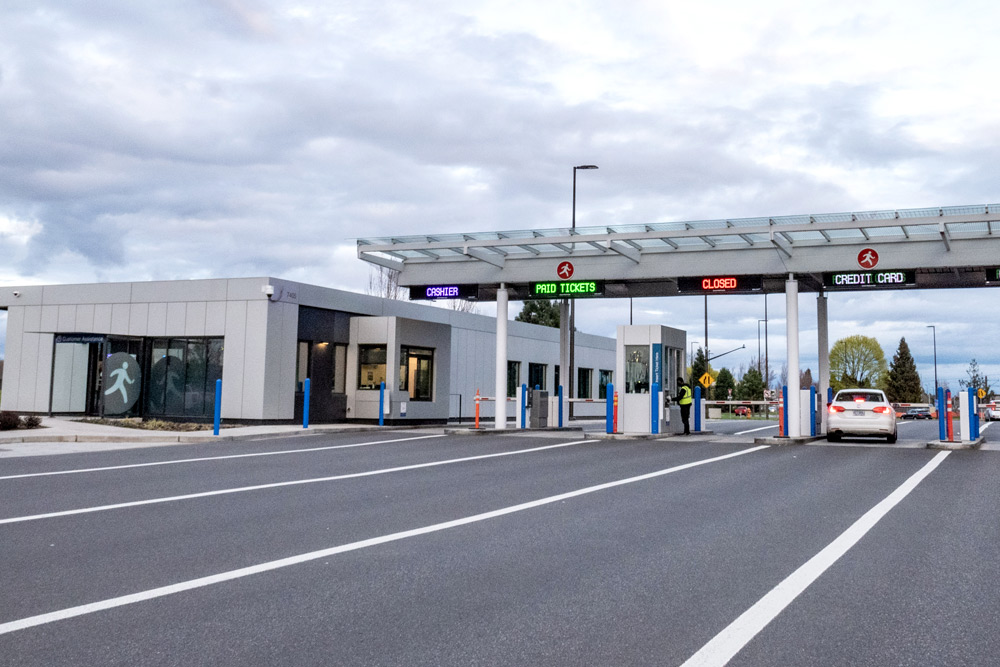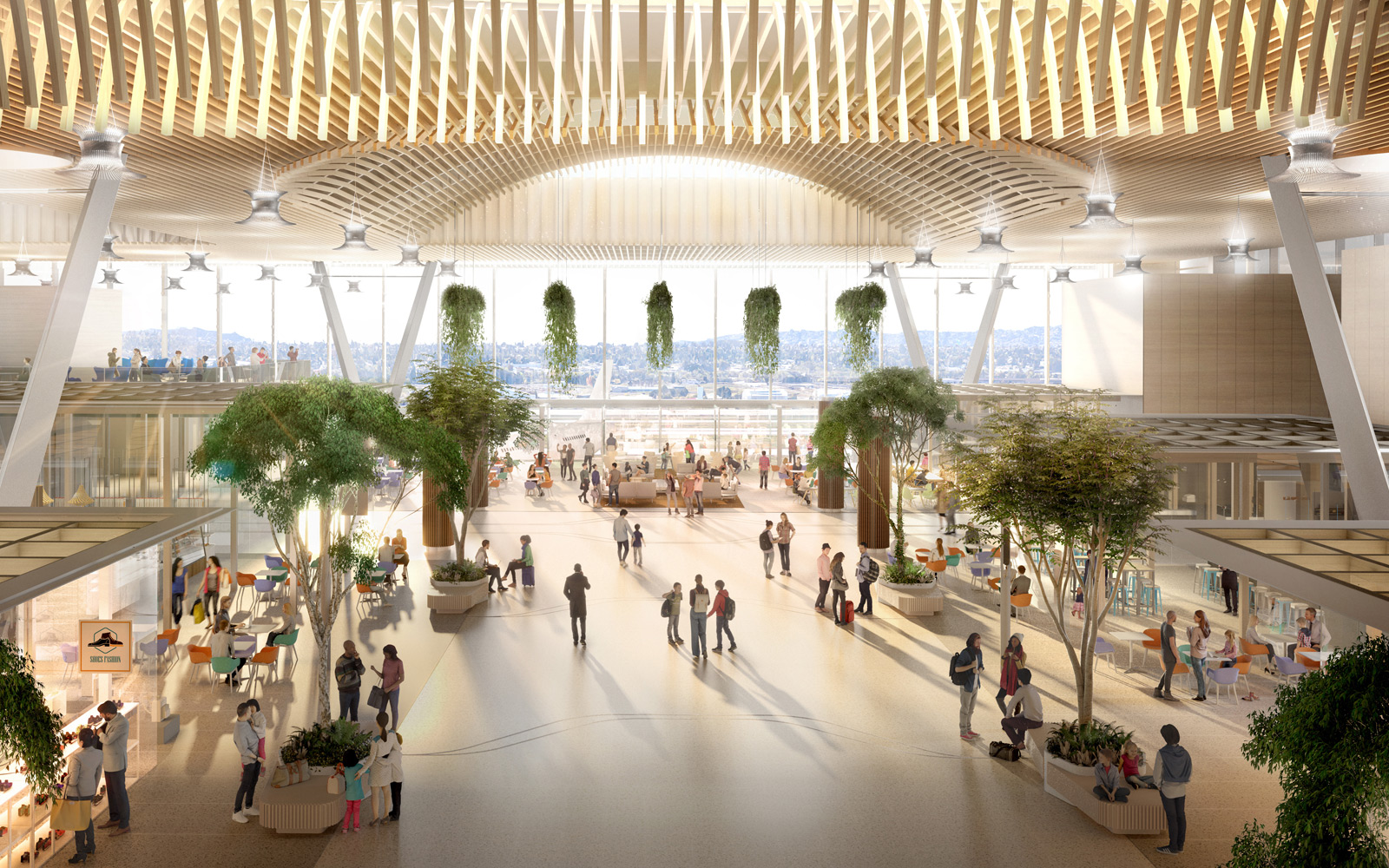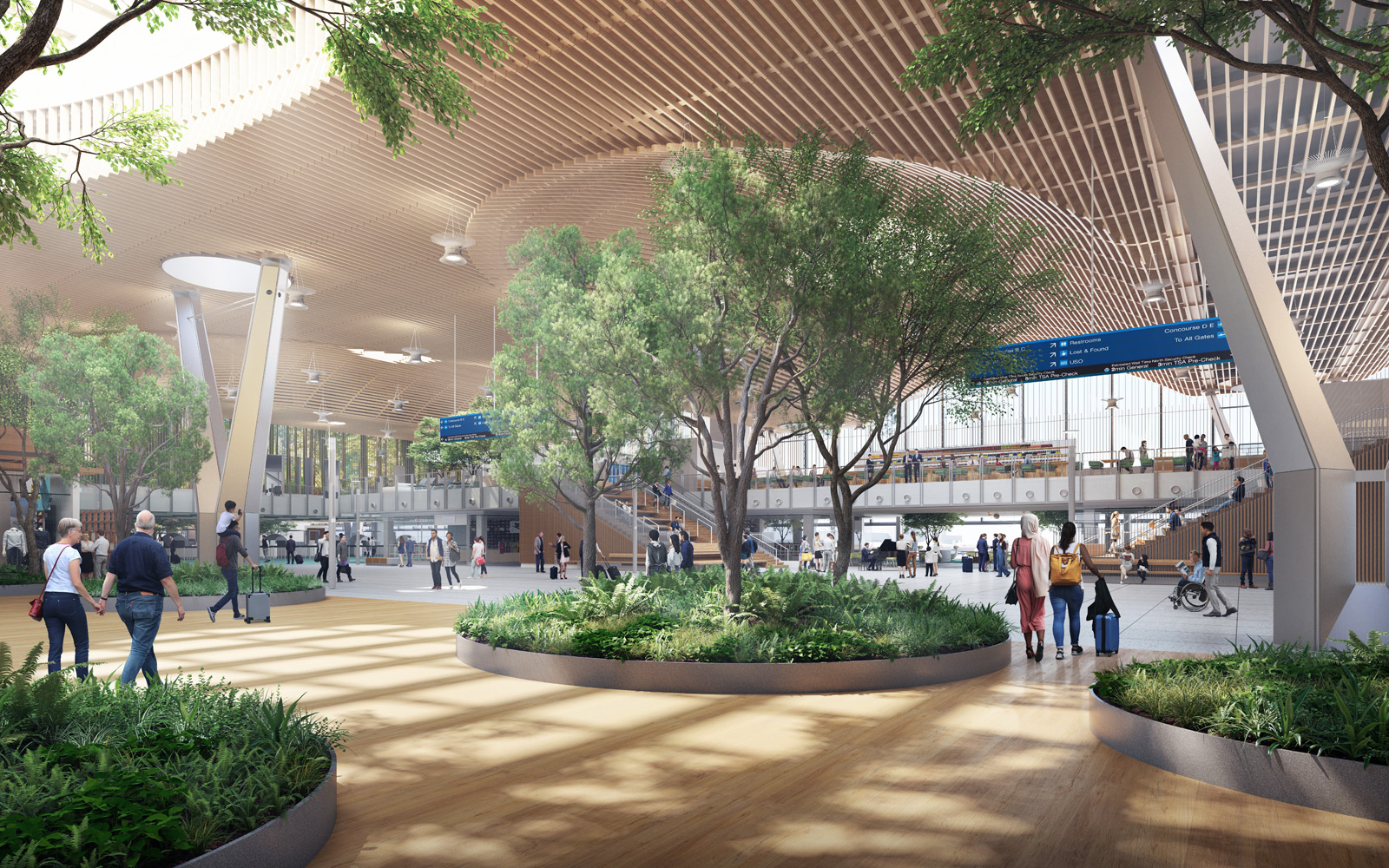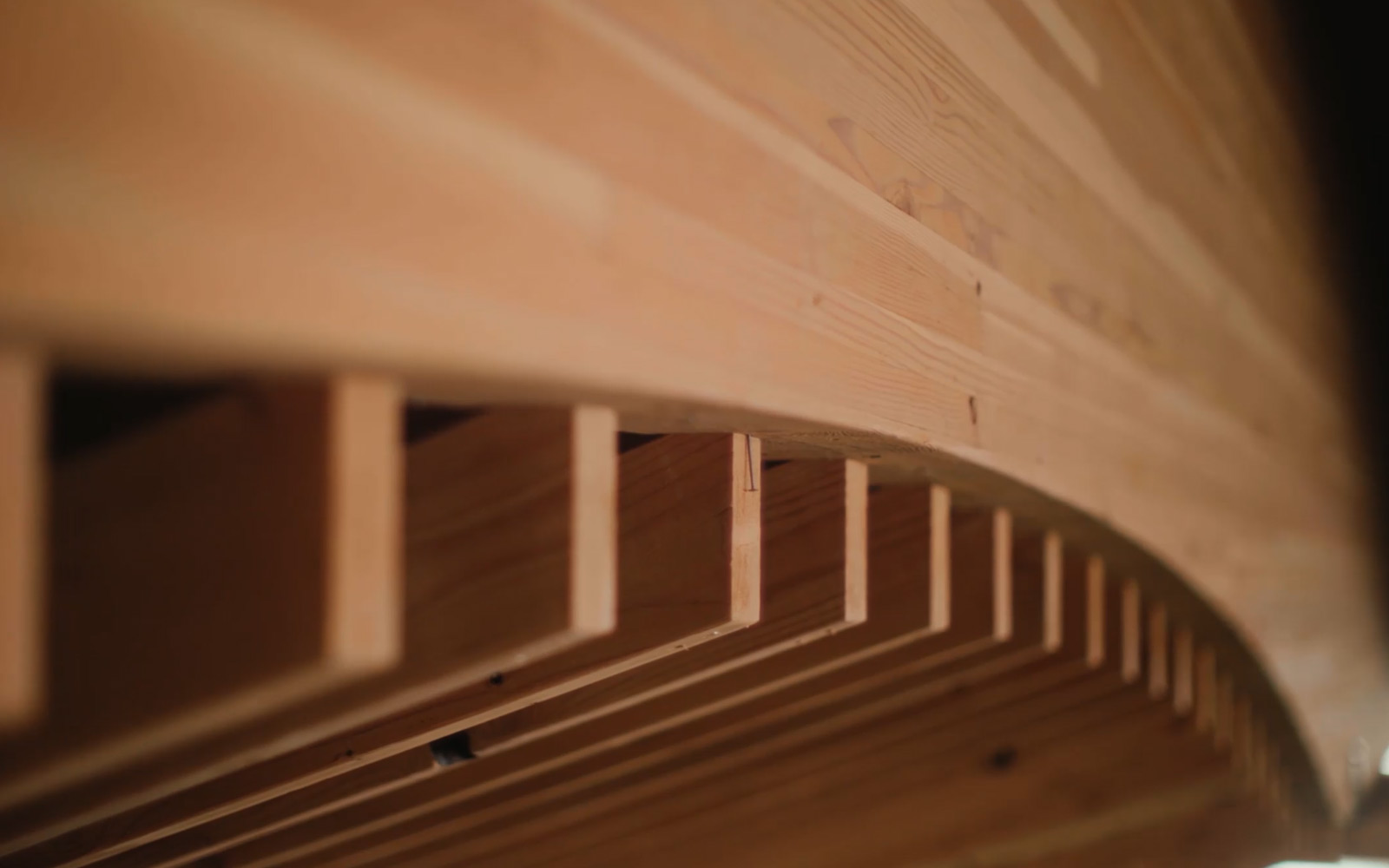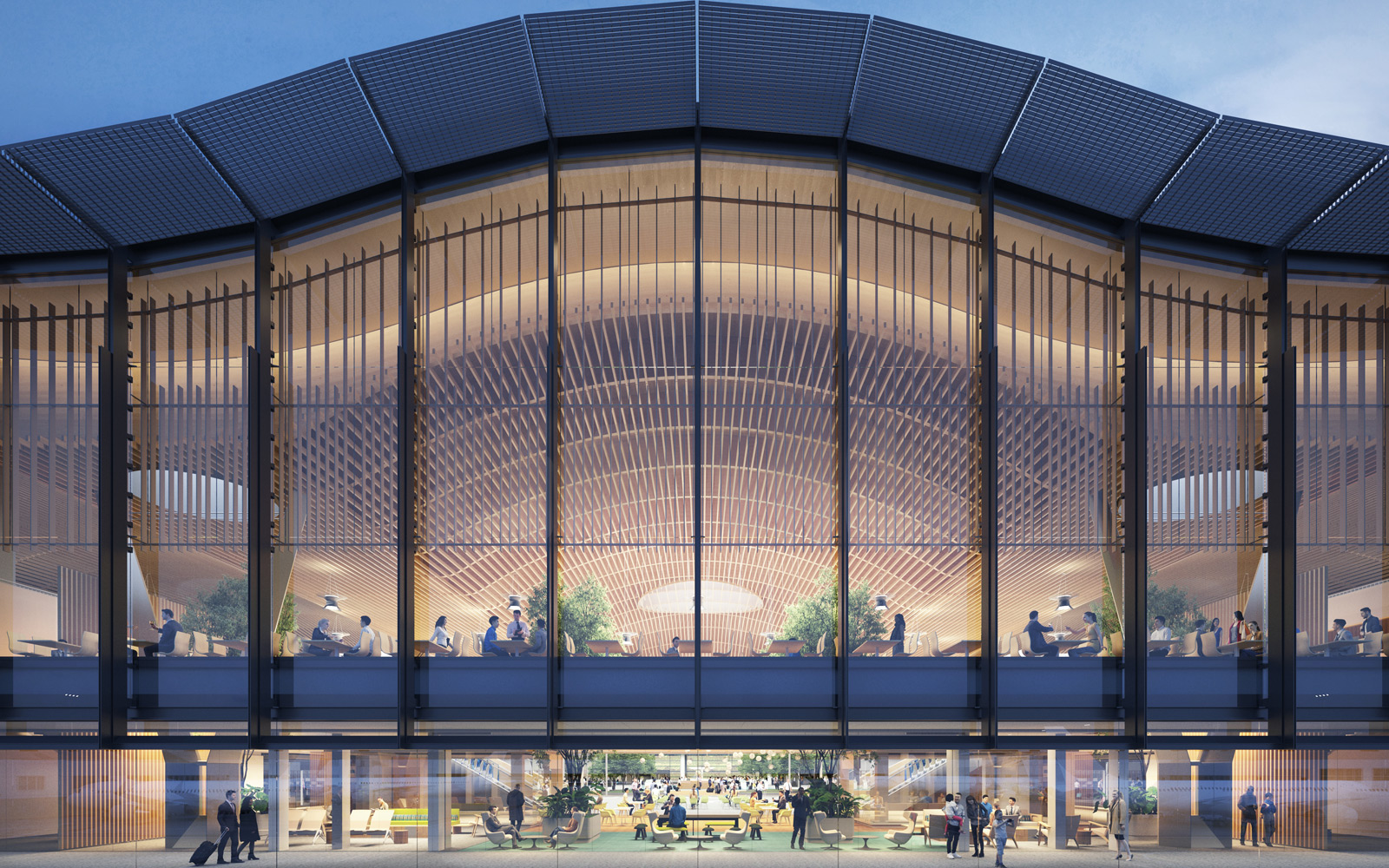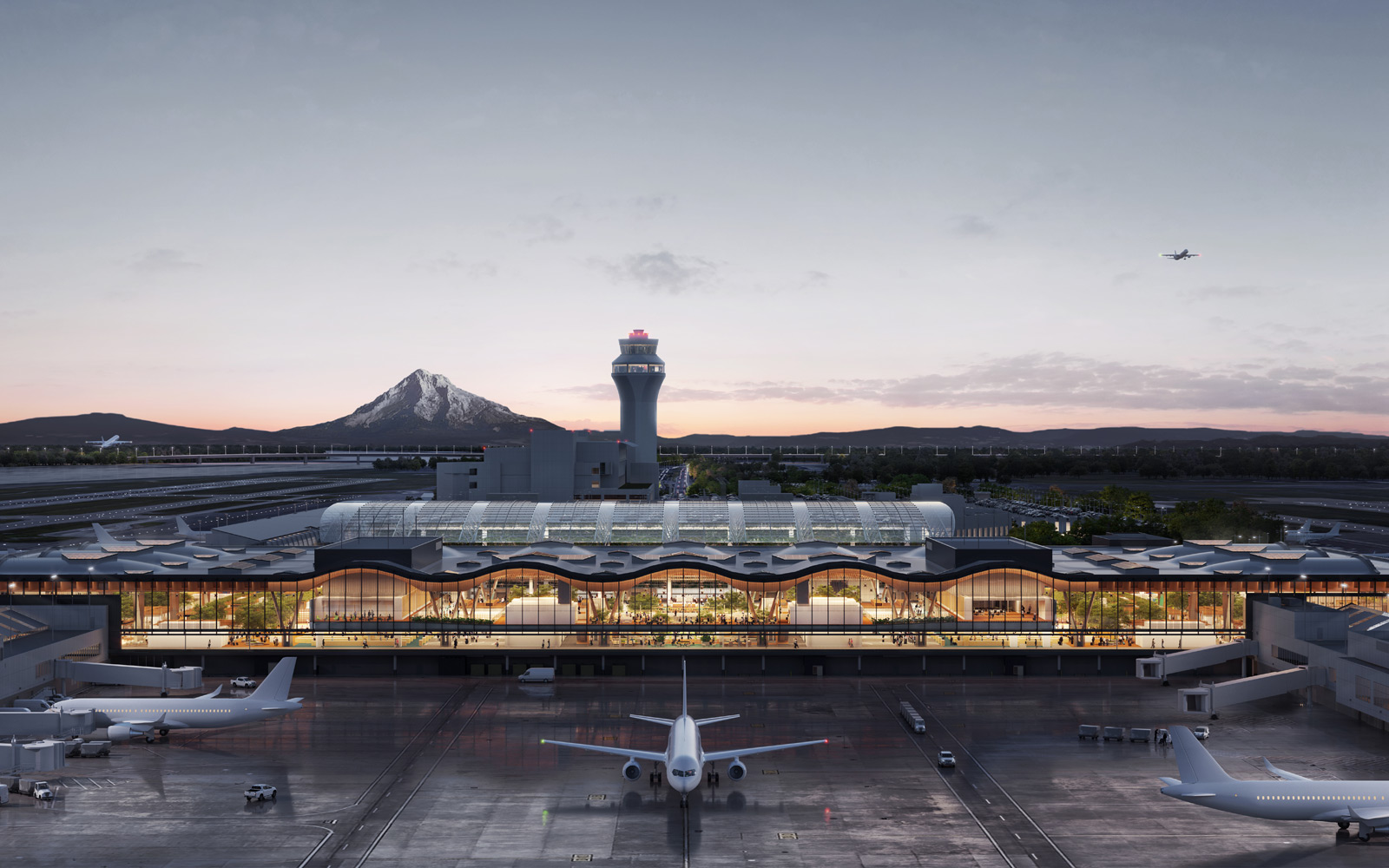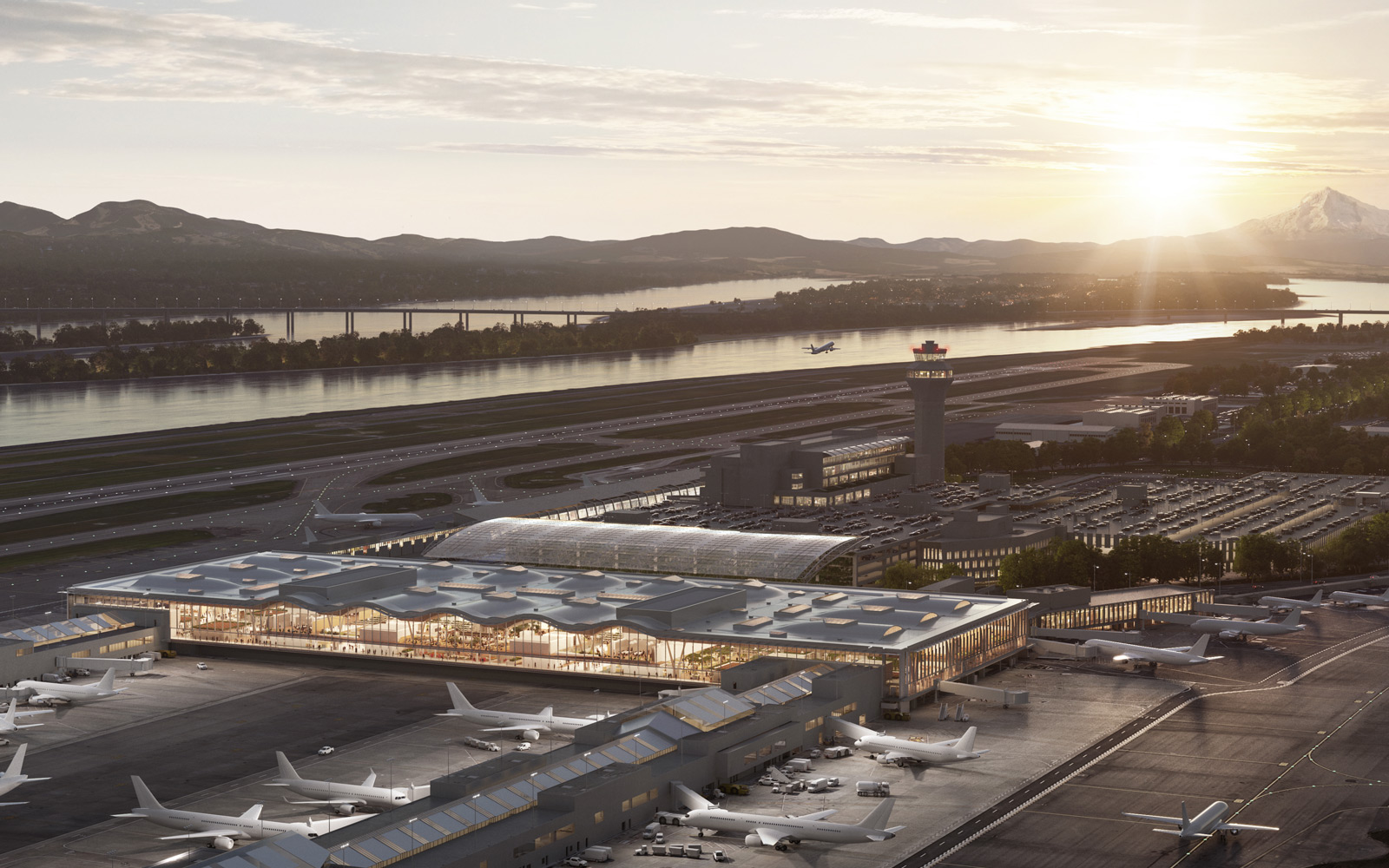Quick update: This article was written in 2021. Want to read more about the new PDX?
Fresh art is coming to the Portland International Airport this fall. And much like the recently unveiled designs for the main terminal, the artists behind the new works are taking inspiration from a wide range of natural phenomena.
The artists unveiling their latest pieces this November — Perez Westbrooks, Ben Butler and DeWitt Godfrey — are each masters in their own right. All three responded to an open call from the airport for visual art commissions. Their new works are all part of the continued growth of the airport’s art program, which welcomes rising and acclaimed names to create work for gallery-like displays and unconventional installations throughout PDX’s concourses and common spaces.

Keep an eye out for these three new works when you enter the transitional space leading to the new rental car center at PDX. One piece is a series of large-scale digital art prints meant to reflect growth in the Portland region. Another is a striking wooden mural that mimics organic patterns, and the third is a massive steel honeycomb-like structure.
Here we go behind the scenes with the three artists to get to know who they are and what they have in the works.
Perez Westbrooks reflects on Portland’s growth
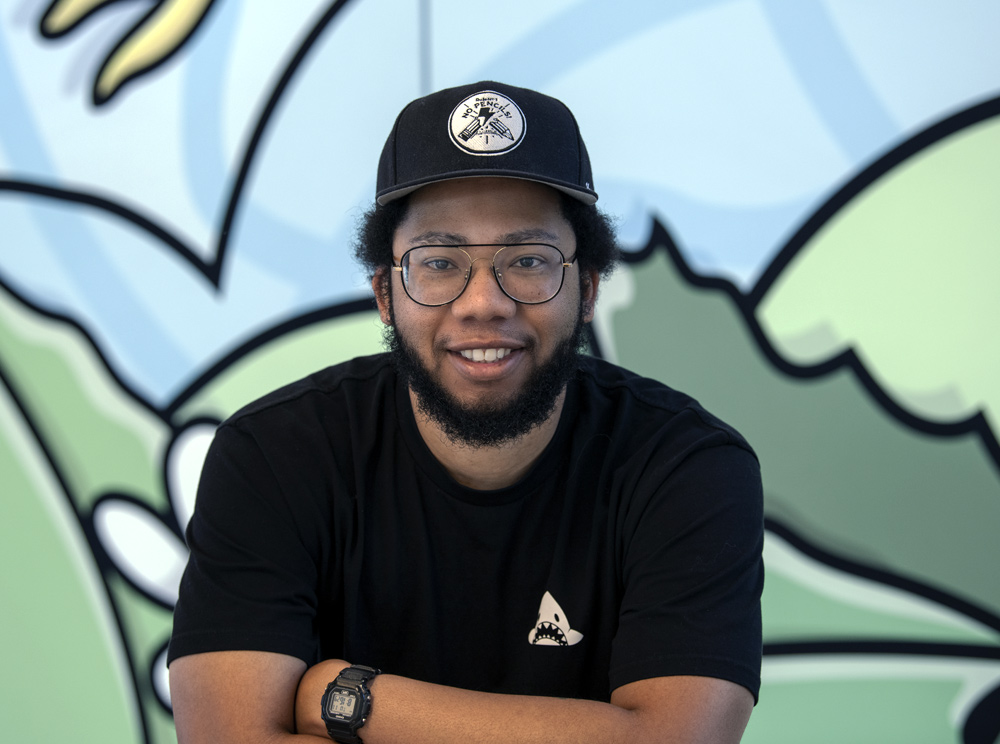
Perez Westbrooks' new digital arts mural at PDX comprises several panels featuring prints that are about 20 feet tall and 40 feet wide, building up to one cohesive piece. Perez, who creates art under the name Gaijin, grew up in Sacramento but now calls Portland home. His work is often inspired by Japanese culture and pop art. As a nod to his influences, his moniker is a Japanese term to describe an “outsider” or “foreigner” in Japan. “I chose the name because I grew up feeling like a foreigner in my community schools and a country that is supposed to be my own.”
Today Perez says he’s shifting away from traditional art mediums like paint and paper, and is instead choosing to take on more sculptural pieces and digital work. His bright, colorful pictures have a comics-like aesthetic and feature recurring characters like Sharkie (his original adorable shark) as well as heavy doughnut symbolism (that has garnered him work with Blue Star Donuts).
The Gaijin motto is “Forever Hungry,” and Perez says staying hungry is what propels him to taste sweet success (another cheeky nod to doughnuts). It is also the name of Perez’s online shop, which includes painted apparel and glossy resin sculptures in the shape of cartoonish donuts (one in particular is a commemorative “Dilla Donut,” inspired by American record producer and rapper J. Dilla, who passed away in 2006).
Westbrooks says his new work at PDX is “completely influenced by Portland,” adding that he used to work baggage at the airport, so he had some thoughts about what could be a unique addition to the PDX art collection. “I wanted something that would be very colorful and pop — and I mean my art already is colorful and poppy — so I knew I'd be able to make something that stands out,” he says.

The digital illustrations feature plants that are native to the Pacific Northwest. “I never really came up with an official title, but the idea of the piece is ‘Portland's growth,’” he says, adding “which should probably be the name of the art piece.” Perez says the work is also inspired by “the airport being a place that brings in people from other countries and other areas.”
“[PDX] brings a lot of influence to the city, helps the city grow and helps people see things in a different light. It's the only way to grow, so that's what the whole piece is about.”
Ben Butler brings spontaneous, organic style

Ben Butler’s portfolio sees him working with an array of semi-permanent materials, with a particular liking to wood, and an anti-design method that allows spontaneous elements and organic patterns to take over the direction of the art. Ben’s new piece at PDX is entirely wood, made with 100% recycled Douglas fir reclaimed from old Portland buildings.
“The whole concept of the piece has to do with the story of timber, and specifically Douglas fir, in the region,” says Ben. Eight feet tall by 45 feet long, and coming a few inches off the wall, the work demonstrates Ben’s fascination with the tension between micro and macro and between natural and human-made.
“If you get up close to it on a micro-level, you see all of those great growth rings and all those patterns,” he says. “Backing up, those patterns are echoed on a macro scale, carved into this giant slab. So it's kind of a whimsical play between that micro and macro.”
Since the location of the new artworks is in a “transitional space,” Ben says he knew people were mostly going to be walking by his carved wood piece, so he let movement inspire him in its creation.
“The depth of the carving results in a kind of interesting phenomenon where it reads as primarily two-dimensional, but as you pass, it shifts a little bit because it has a depth to it,” Ben explains. “So it's sort of a layered story. Obviously, Douglas firs are hugely important to the city, the state, [and] the region economically. In terms of the future, that region is kind of leading the way in thinking about how those industries can be sustainable.”

DeWitt Godfrey’s sculpture is deceptively light

Specializing in creating public art around the world, DeWitt Godfrey tends to work in permanent materials like steel, typically stacking and arranging them and letting them mimic natural circular processes like plant spores and honeycombs. His soon-to-arrive PDX sculpture “Atlas” is no different.
DeWitt’s been working on the sculpture since the end of 2020. He says it took longer than his team hoped to get started, since the airport’s “stringent seismic standards” led him to scrap his first vision and return to the drawing board.
“The piece is very large, [with] these packed loops or so underneath,” he says. “The works are also transparent. So there's a lot of volume, but there's also a lot of space in there.” In fact, the metal sculpture appears to bubble out of the floor and hold the ceiling aloft. (Don’t worry, it doesn’t!) You may find yourself circling it a few times, wondering how something so solid could look so ephemeral.
Like Ben, DeWitt was intrigued by the thought of how people encounter his new work at PDX. Some, he thinks, may be caught by surprise. “And then there's also a second floor [with] another second viewing area, too, so you can kind of look down into the piece,” he says. “It’s a really dynamic space.”
